Recent Storm Damage Posts
Heavy Rains can cause Flash Flooding
8/24/2023 (Permalink)
 We respond to storm damage emergencies 24-hours a day.
We respond to storm damage emergencies 24-hours a day.
Florida has experienced some severe weather events that have caused significant damage to homes and commercial properties in our area. SERVPRO of North Palm Beach County is trained and certified to restore storm damage by the Institute of Inspection Cleaning and Restoration Certification (IICRC). Heavy rains can cause flash flooding, so it is a good idea to know what to do when faced with a flash flood situation. Here are some flash flood safety tips from the National Weather Service:
- During periods of heavy rains, stay away from flood-prone areas such as stream beds, drainage ditches, and culverts
- Move to higher ground if flooding threatens your area
- If you live or work in flood-prone areas, remain alert during periods of heavy rain
- Be especially cautious at night as it is harder to recognize flood dangers
- Never drive your car into water of unknown depth. Most flash flood deaths occur when people drive their vehicles into flood waters. Remember: Turn Around Don’t Drown!
- If your vehicle stalls, abandon it immediately and seek higher ground. Flood water may rise quickly, cover the vehicle, and sweep it away.
- Stay out of flooded areas. The water may still be rising and very swift. A rapidly flowing stream can sweep you off your feet and sweep your vehicle downstream.
Call Us Today!
If your home or commercial business has experienced flooding damage, SERVPRO of North Palm Beach County will restore the damage “Like it never even happened.” Call us today at 561-285-4845.
FIU Simulates 200 mph Hurricanes to Prepare for Extreme Weather
7/15/2022 (Permalink)
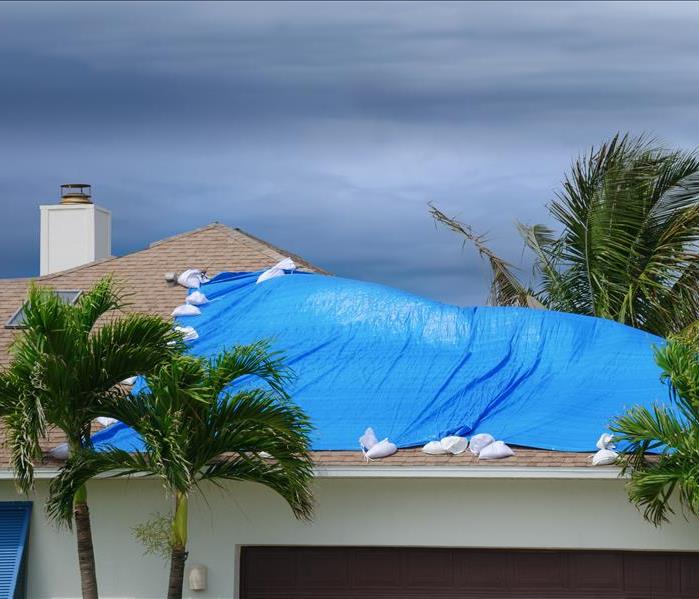 With the goal of saving more homes, these researchers hope to change the way that builders think about construction, materials, and more.
With the goal of saving more homes, these researchers hope to change the way that builders think about construction, materials, and more.
Floridians have seen some of the world’s most massive hurricanes over the years. And while the 2022 hurricane season has been rather quiet thus far, South Florida residents are always looking for ways to protect their homes in the event of a major storm. That’s why students at Florida International University (FIU) turned to the “Wall of Wind”, 12 gigantic fans that serve to simulate the strength of a major hurricane.
Located inside of an airplane hangar, this newly developed engineering lab will help to test the design and build of structures to eventually play a role in building stronger houses in Florida. The university’s Extreme Events Institute is excited to use this research in an attempt to address the inevitable impact of climate change.
According to the institute’s director, Richard Olson, “I want to be seeing research and testing in the 170-, 190-mph range. A lot of the research is at lower wind speeds, but I need to be changing to extreme wind speeds because that’s where nature is going. Who wants to be explaining in 20 years, ‘Ya—I knew this was coming but we didn’t do anything about it.’”
While critics would say that testing 200-mph wind speeds is a waste of time, these researchers know that this threat is real. For instance, Hurricane Dorian hit the Bahamas with 185 mph winds in 2019 and Hurricane Patricia brought 215 mph winds to Mexico in 2015. These hurricanes prove that this type of testing is necessary and important.
With the goal of saving more homes, these researchers hope to change the way that builders think about construction, materials, and more when it comes to building homes in South Florida. Storm damage has threatened the lives and homes of Floridians for many, many years, and these engineers at FIU may have unlocked a new method of thinking that will ultimately result in powerful change.
Preparing Your Backyard for a Big Storm
4/26/2022 (Permalink)
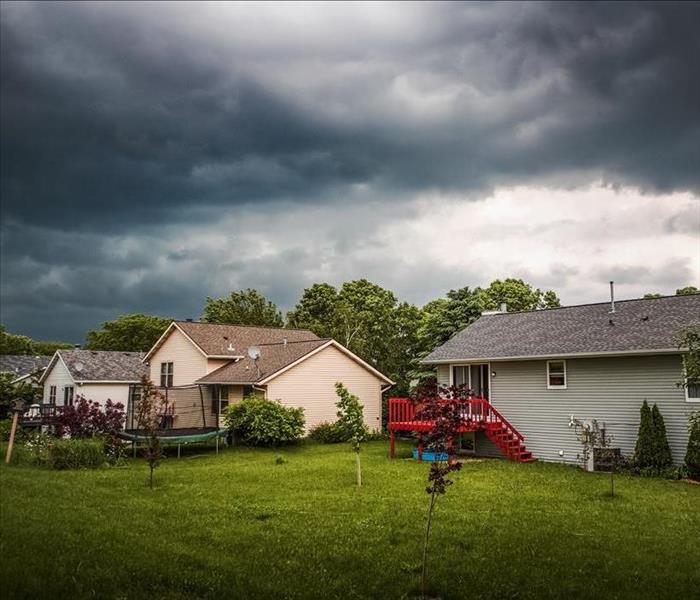 With the 2022 hurricane season quickly approaching, it’s time to prepare your backyard for that big storm.
With the 2022 hurricane season quickly approaching, it’s time to prepare your backyard for that big storm.
That seemingly innocent lawn chair, low-hanging branch, pool umbrella, or kiddie toy may pose a greater threat than think. These common items, combined with the right amount of wind, can cause tremendous damage, including water damage, during a large storm or hurricane. South Florida storms are not to be taken lightly. With the 2022 hurricane season quickly approaching, it’s time to prepare your backyard for that big storm.
Hurricane season begins on June 1st and last throughout the month of November, with peak season between mid-August and late October. South Florida frequently finds itself in the path of these destructive storms. Learning how to secure your home and yard in the face of damaging winds, storm surges, and floods will save you money, time, and stress. Start preparing your yard by checking trees, drains, projectiles, and pools using the following list:
Tree Prep Before a Storm
- Check for dead or damaged trees, branches, and roots. A dead or damaged tree, or part thereof, is more likely to fall off during a storm forming a potentially dangerous projectile.
- Trim and remove dead and damaged tree parts regularly.
- Clean up and secure all lose yard debris.
- Palms do not need to be pruned prior to a hurricane. Never remove healthy fronds from the palms.
- Potted plants and trees should be moved indoors.
- Pick produce from vegetable and fruit trees if close to ripe. This includes coconuts or large palm seeds from palm trees.
- Secure or bring inside all yard tools.
Drainage Concerns Before a Big Storm
- Remove all debris from storm drains. If storm waters cannot flow correctly, it can cause flooding which will lead to water damage.
- Inspect runoff areas to ensure the water has somewhere to go.
- Turn off your irrigation systems or sprinklers. If possible, shut off the water at a main line.
- Clean out your rain gutters. Remove all debris and properly dispose twigs, leaves, etc.
- Check that your rain gutters are securely attached.
Removing Projectiles Before a Big Storm
- Bring in all outdoor furniture, garbage cans, yard decor, flags, wind chimes, and any other items that are not tied down securely.
- Have a plan for which items will be brought in and those items that require secure fastening.
- Dispose of broken or unnecessary items that pose a hazard. Ex. Old flower pots, wood, etc.
- Have a plan in place for safe and secure storage of things like swing sets, compost bins, grills, doghouses.
Preparing Your Pool Before a Big Storm
- Never empty your pool! This could lead to structural damage and possibly even lift the pool off its foundation.
- Turn off power to heaters, pumps, lights, filters to conserve energy during the storm and minimize the risk of problems, including water damage, post-storm.
- Bring in all pool toys, umbrellas, furniture, etc.
- Securely fasten all large items.
A thorough plan and list will ensure effective preparedness, minimize stress, and keep you and your family safe from those impending South Florida storms. As always, when a big storm is coming SERVPRO of North Palm Beach County is your go-to resource for storm damage restoration or water damage repairs. Contact our office today to speak with an expert!
Hurricane Preparation for South Florida Homeowners
2/21/2022 (Permalink)
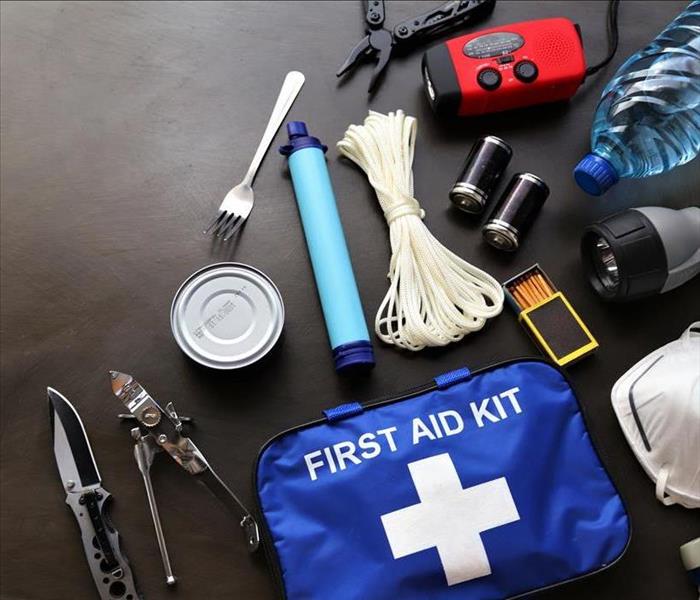 Even the most seasoned Florida residents can forget what they need in the chaos of a pending hurricane.
Even the most seasoned Florida residents can forget what they need in the chaos of a pending hurricane.
As South Floridians continue to enjoy this near perfect weather, it can be easy to ignore hurricane season lurking around the corner. While there are certainly preparation actions that can wait until it is closer to June, the start of hurricane season, it is still a good idea to begin planning now. Not only is preparing early good for you mental health, it is also good for your wallet. Prices tend to increase right before and during hurricane season, particularly when a hurricane is about to hit. So, making purchases and doing prep work now will save you both time and money in the long-run.
From home maintenance to insurance policies to stocking supplies, there are a lot of tasks to complete to be fully prepared for hurricane season. With this in mind, it is prudent to get some of these things done during the spring season before summer season begins. When the weather starts to turn you will be grateful that you took the following steps:
- Reviewing your insurance policy to check for the type of protections that you have in place for your home
- Writing down a list of valuable possessions and taking photos of them to maintain a working list of item conditions
- Having your roof inspected to check for any loose tiles or shingles
- Clearing all gutters and drains
- Gathering bottled water, canned goods, and a first aid kit
- Planning out evacuation solutions
Even the most seasoned Florida residents can forget what they need in the chaos of a pending hurricane. As such, it is important for all homeowners in South Florida to take action now and avoid the stress of preparing in a pinch. As always, SERVPRO of North Palm Beach County is available for any and all storm damage restoration needs. Give our storm damage repair experts a call today to learn more.
Spring Showers Will Be Here Before We Know It
1/3/2022 (Permalink)
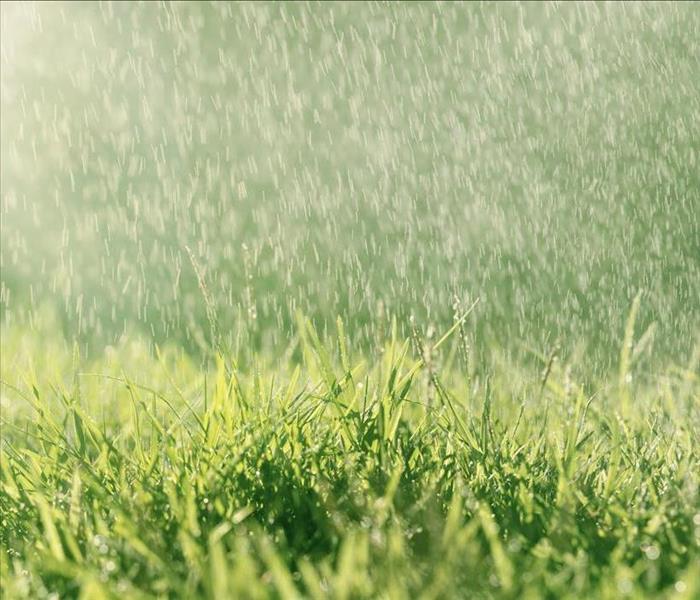 Preparing your home or business now means potentially saving a lot of money in water damage and restoration.
Preparing your home or business now means potentially saving a lot of money in water damage and restoration.
January in South Florida is the best reminder for all of us that we live in the greatest place in the world. With cooler weather here and there we are able to put on some of our winter gear, even if it is only for a day or two. Even more exciting, however, is that it barely rains during the winter season. That means staying outside for long hours and enjoying clear skies and sunny days. While we are still in the middle of the winter season, South Floridians can probably look forward to one or two additional cold day stretches before springtime arrives.
Seasoned Floridians know that while the flowers bloom beautifully during springtime, we can also look forward to rain, a lot of rain. When people talk about “spring showers” they refer to the saying that was established due to the particularly rain-filled months of March and April. Unfortunately for homeowners and business owners, spring showers can mean potential water damage to both the interior and exterior of a property. While it may seem early to start preparing now, the spring season is sure to sneak up on us.
As such, South Florida homeowners should keep the following tips in mind to prepare properly for this year’s spring showers:
- Check the sealants of all openings throughout the home – all windows and doors
- Review your insurance plan so that you know your coverage and take a look at whether or not you have flood insurance
- Conduct a roof inspection to make sure that there are no loose shingles, broken tiles, or any dents or gaps
- Take a look at your home’s landscaping and check for any potential safety hazards.
- Do a full inspection of your home’s exterior, paying careful attention to the gutters and downspouts
While no one knows quite how much rain will fall this spring, we can all count on consistent rain throughout the season. Preparing your home or business now means potentially saving a lot of money in water damage and restoration. As always, if you do encounter water damage or storm damage SERVPRO of North Palm Beach County is here for you. Contact our office today to speak with a storm damage repair expert.
Insurance Policies and Florida Storms
11/17/2021 (Permalink)
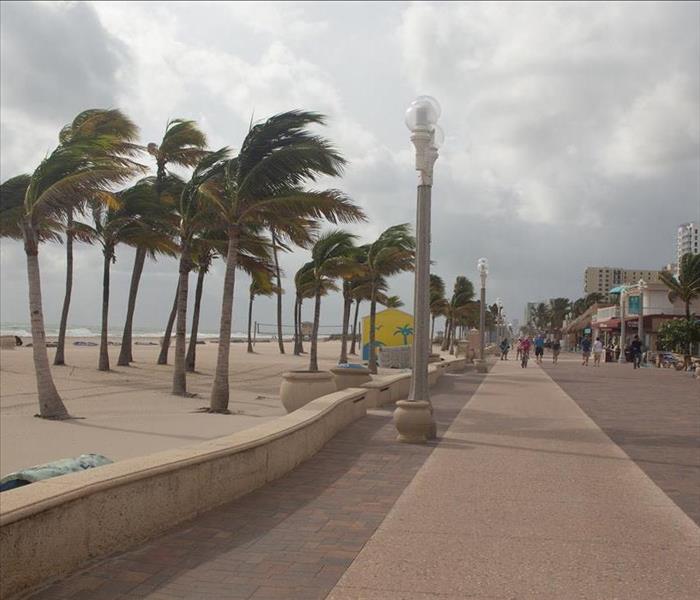 To ensure that your home is covered in the event of a hurricane, it is crucial to have both flood insurance and windstorm insurance.
To ensure that your home is covered in the event of a hurricane, it is crucial to have both flood insurance and windstorm insurance.
Florida has been hit with some of the most intense and destructive storms in memory. These hurricanes wreak havoc on the community, leaving a trail of homes, stores, offices, and schools destroyed in their wake. When hurricane season rolls around every year, there is a new opportunity for this destruction. When living in Florida’s climate, it is essential that you protect your home and business against potential hurricane damage.
What is Hurricane Insurance?
Technically, there is no policy known as “hurricane insurance.” In order to protect your home in a Florida storm, it is important to be insured against the elements with the potential to cause the highest damage: water and wind. To ensure that your home is covered in the event of a hurricane, it is crucial to have both flood insurance and windstorm insurance.
How much does Hurricane Insurance cost?
There are many different factors that go into the calculation of insurance that will protect your home against a hurricane. This is because hurricane coverage equates to more than one policy which vary in pricing, prices vary based on insurance company, and the value and location of the home are both variable factors.
According to Bankrate, the average cost for homeowners insurance in Florida is $1,951 per year, in addition to the average cost of flood insurance which is $723, which is a total of approximately $2,674 a year to protect a Florida home from hurricane damage. While most homeowner insurance policies in Florida cover wind already, it may be an extra cost for windstorm protection if not already included.
If you are renting your home, the National Flood Insurance Programs offers flood insurance starting at only $99 per year. However, rates will always depend on your location.
What is the Hurricane Deductible?
In addition to the average cost of hurricane insurance outlined above, homeowners in Florida are also entitled to a special hurricane deductible. Florida laws are very specific when it comes to the activation of this hurricane deductible, and can be found in their entirety here.
In order for the hurricane deductible to come into play, the hurricane needs to be a named storm and declared as a “hurricane” by the National Hurricane Center of the National Weather Service. There is also a specific time frame in play. The Hurricane Deductible would apply from the time a hurricane watch or warning is issued for any part of Florida by the National Hurricane Center until 72 hours following the termination of the last hurricane watch.
In Florida, insurance companies are required to offer hurricane deductible options of $500, 2%, 5% and 10%. Additionally, Florida has a “single season hurricane deductible,” which means you are responsible for only one hurricane deductible during a given hurricane season no matter the amount of total storms.
Be Proactive Before the Next Hurricane
9/27/2021 (Permalink)
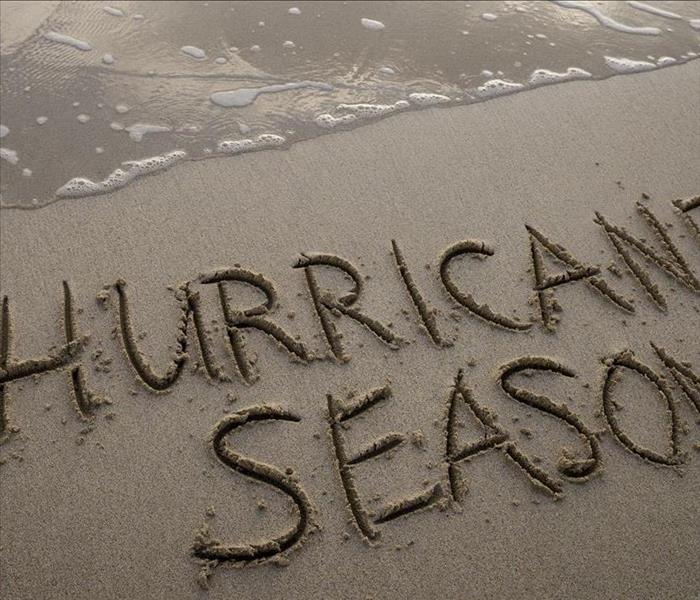 Preparing now is essential to minimizing damage and making things run as smoothly as possible.
Preparing now is essential to minimizing damage and making things run as smoothly as possible.
South Florida residents have grown accustom to riding the wave of hurricane season. With many scares and unpredictable storms, it can be easy to become numb to true threats. Hurricane Ida rocked Louisiana, killing over a dozen people, leaving millions without power, and causing quite a lot of property damage. While we take lessons away from every storm in South Florida and beyond, Hurricane Ida reminded us just how quickly a storm can come and wreak havoc.
Today, hurricanes are typically identified with ample time to prepare. However, when the weather experts alert us that a storm is headed our way, panic usually follows. This means people swarming the supermarket to purchase supplies, running to prepare their landscaping and outdoors areas, and frantically putting together their home. This chaos is unnecessary for those who prepare in advance.
Being proactive is critical to remaining as safe as possible during Florida’s hurricane season. The following tips are strongly advised for all Florida residents:
- Map out your evacuation route now, taking into account a variety of possible routes dependent upon traffic and weather.
- Stock up on emergency supplies like batteries, non-perishable items, water, and first aid kits.
- Review your insurance policies and learn all about your particular coverage.
- Make sure you know where all of your important documents are so that you can grab them in a hurry.
- Take inventory on the exterior of your home, noting what needs to be done when a storm is coming.
The grocery store is the last place you want to be in the day or two before a hurricane hits. Preparing now is essential to minimizing damage and making things run as smoothly as possible. As always, if your home suffers from storm damage, please contact SERVPRO of North Palm Beach County to speak with our water damage restoration specialists.
Hurricane Season Has Yet To Reach Its Peak
8/3/2021 (Permalink)
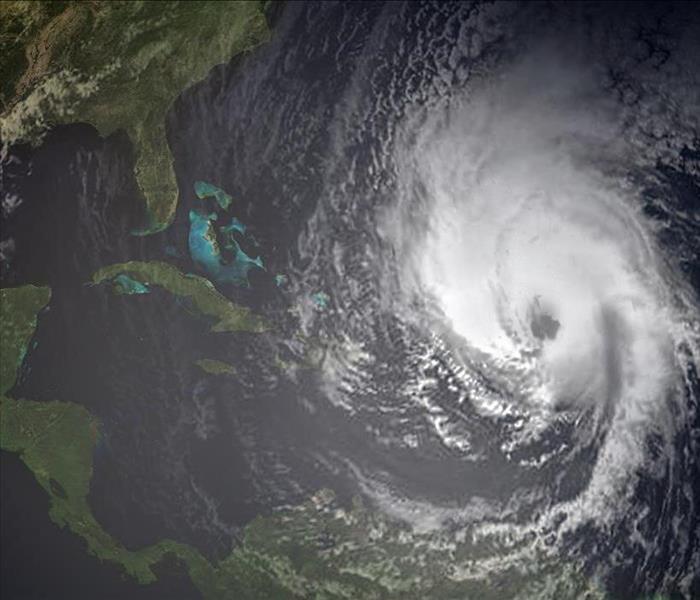 The following are some of the most important things that Florida homeowners can do right now to prepare for the peak of hurricane season.
The following are some of the most important things that Florida homeowners can do right now to prepare for the peak of hurricane season.
Many Floridians are looking at the calendar and feeling a sense of relief. With about one-third of hurricane season come and gone without any major storms, it is easy to get wrapped into a false sense of security. Starting on June 1st and running through November 30th, the first couple of months of hurricane season often make residents of South Florida feel safe. Unfortunately, about 90 percent of hurricanes typically hit Florida between the months of August and October every year.
Statistically speaking, September 10th marks the peak of hurricane season. And while the National Hurricane Center is not currently monitoring any systems, we should still remain vigilant despite the quiet tropics. From tropical storms to hurricanes, the 2021 Atlantic Hurricane Season is poised to be active. Experts are predicting at least 20 named storms to hit and that means that all Florida residents must be prepared.
The following are some of the most important things that Florida homeowners can do right now to prepare for the peak of hurricane season:
- Stock up on supplies now – water, non-perishable items, flashlights, first aid kits, etc.
- Keep your gutters clear
- Have a hurricane evacuation plan in place
- Make sure that your cars are always filled with gas
- Check your insurance policy
- Get your roof inspected
- Ensure that your generator is working properly
While Florida has been lucky thus far, hurricane season is far from over. As we prepare to enter the peak of hurricane season, it is important to take each and every storm seriously. Becoming complacent is common for Floridians who have lived through countless storms. However, it is critical that all homeowners heed the warnings of the National Hurricane Center.
At SERVPRO of North Palm Beach County we have over 30 years of experience in water damage restoration and storm damage repair. We take pride in helping out South Florida community pick up the pieces after every storm. Call our office today to learn more.
Tips for Keeping Your Lawn Healthy and Safe During Hurricane Season
6/17/2021 (Permalink)
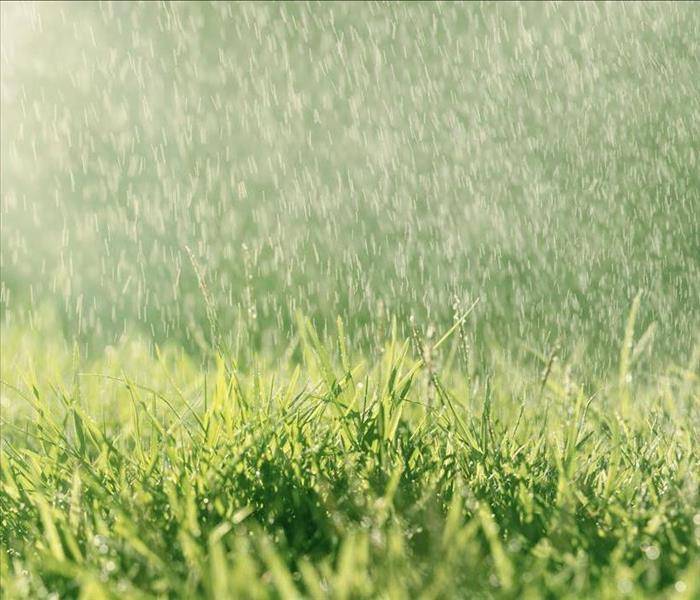 It is crucial to prepare your lawn in order to keep it healthy during South Florida hurricane season.
It is crucial to prepare your lawn in order to keep it healthy during South Florida hurricane season.
With high power winds, intense rains, and an extreme potential for flooding, hurricanes can easily ruin your lawn and surrounding property. While you may not be able to prevent a hurricane from hitting your area, there are certain things you can do to ensure your property survives with the smallest amount of damage possible. It is crucial to prepare your lawn in order to keep it healthy during South Florida hurricane season.
1. Keep Trees Pruned
The process of pruning, getting rid of dead or unwanted branches from tress, is a key part of preparing your lawn for Florida’s hurricane season. With hurricane winds exceeding 74 mph, it is important to prune your branches before the storm in order to prevent them from flying through the air and potentially into your home. Dead or decaying branches can become hazards if the hurricane winds tear them off of the trees. However, it is important to keep the healthy branches intact to provide stability to the tree and keep it from toppling over.
2. Remove Any Items from the Yard
To prevent items flying around your yard and causing any damage, all yard décor and small potted plants should be brought inside the house in preparation for a hurricane. If items, such as large plants, are too big to move, lay them sideways and try to secure them to the ground. Any lawn decorations, toys, wind chimes, or anything else that could easily get picked up by the wind, should all be moved inside.
3. Turn Sprinklers Off
Due to the fact that it can be extremely detrimental to over water plants, you should make sure your sprinklers are turned off your lawn does not receive any extra water during or after the hurricane. The heavy rainfall that comes with hurricanes can potentially lead to diseases that weaken the roots of your plant. With this, the heavy winds from the hurricane could uproot the plants on your lawn. Even though most sprinkler system will automatically turn off during rainfall, it is important to manually turn them off before a storm until your lawn is no longer oversaturated.
4. Inspect Your Drainage System
It is crucial to make sure your drainage system is working properly in order to keep your lawn healthy. As mentioned above, over-watering your lawn can be very harmful, so its vital to make sure it is draining correctly. Any standing water after the storm can also damage your lawn. You should check for any debris that could block the drain and make sure water has a clear path to follow in order to prevent further erosion.
Protecting Your Backyard from Storm Damage
4/26/2021 (Permalink)
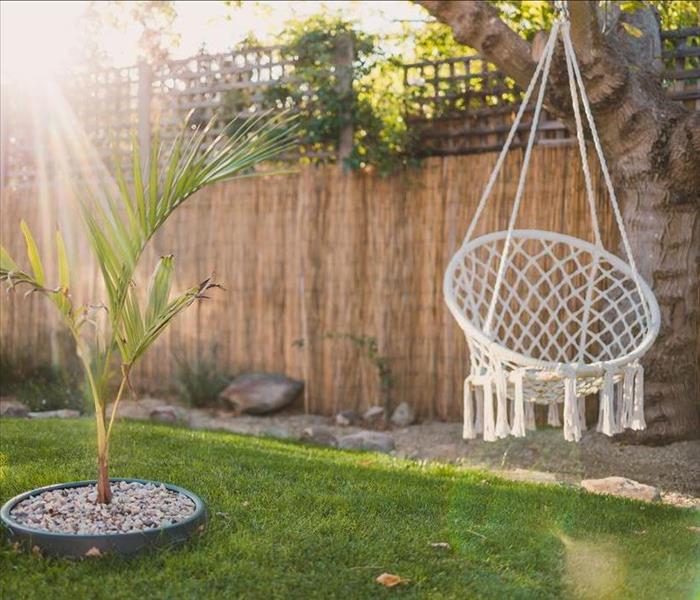 Before the damage is irreparable, it is important to be prepare your home and backyard from these storms.
Before the damage is irreparable, it is important to be prepare your home and backyard from these storms.
No matter where you live, your house can be at risk of a major storm. All types of natural disasters, such as hurricanes or tornadoes, can wreak havoc on your home. While you may not be able to do anything about high-speed winds, there are certain steps you can take as a homeowner to minimize backyard destruction. Before the damage is irreparable, it is important to be prepare your home and backyard from these storms.
Here are a few tips to prepare your backyard from storm damage:
Be Smart About Planting Trees
In order to ensure you can be as prepared as possible for a storm, you should start by choosing the right trees to plant as a preventative step. “Florida Fancy” trees grow well in the Florida climate and are more hurricane resistant. According to research at the University of Florida, homeowners should avoid planting, trees that are shallow rooted in soft soil because they have a tendency to topple over in high winds. These trees could cause more backyard damage than others. Also, it is important to be cautious about where the trees are planted, making sure that the mature height will not interfere with fences, buildings, or powerlines.
Check All Trees and Shrubs
While it may be too late to consider the type of tree planted, you can inspect your plants for any rotting or damaged branches and roots. Dead branches and trees can easily fall in a storm and cause major damage. Also take time to remove any coconuts or large palm seeds, which can be potential hazards if they fall from a high up.
Check Drainage Areas
In case of heavy rain and flooding, you should make sure that all debris is removed from the storm drains and the path is clear. If there is something blocking water from being drained, there is an increased risk of flooding which can ruin your house and backyard.
Remove Any Storm Hazards
If there is any type of storm approaching, it is crucial to remove any objects outside that can get picked up by the wind or ruined by the elements. This often includes items such as toys, plants, lawn/patio furniture, pool items or anything else that is unable to be secured to the ground. It is also recommended by The South Florida Water Management District to do a running a check of the yard to determine whether any debris in your swales or drainage systems might prevent water from flowing away from your property.
Getting Your Home Ready for a South Florida Storm
3/1/2021 (Permalink)
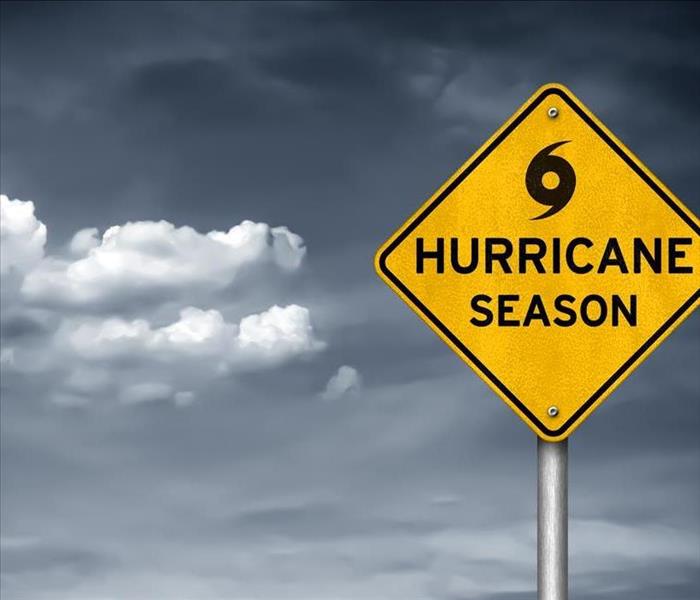 Because hurricane season can last up to half the year, it is crucial to be prepared year-round.
Because hurricane season can last up to half the year, it is crucial to be prepared year-round.
While hurricane season in South Florida can be scary and unpredictable, there are things you can do as a homeowner to ensure your house is as safe as possible in preparation for a storm. Hurricane season usually lasts from the beginning of June until the end of November, with September usually being the peak month for storms. Because hurricane season can last up to half the year, it is crucial to be prepared year-round. Here are 5 tips to make sure your home is ready for a hurricane season in South Florida.
1. Know Your Insurance Policy
Knowing what protections are already intact for your home is a vital step of the process. Often time, insurance policies cover some hurricane damage, but flood insurance is not included. If you are in a high-risk area for flooding, look into purchasing flood insurance to ensure your home is protected no matter what the damage. Also, it is important to review your home insurance policies at least once a year to make sure you’re up to date.
2. Keep Your Roof Well Maintained
The smallest gap or crack in your roof can make a world of difference when it comes to the high-speed wind and rains of a hurricane. If wind is able to get beneath your roof, there is a high probability your roof will lift up and even detach from the house. While the winds of a category 5 hurricane may lift the roof no matter how well it is maintained, a well taken care of roof will be able to hold up against lower category storms.
Also, if winds aren’t strong enough to remove the roof, any cracks or gaps can lead to severe water damage. If water gets inside the walls of your home, it can lead mold and/or mildew that can cause health effects and ruin your home.
3. Track and Take Care of Your Possessions
It is a smart idea to keep an inventory list of the items in your house. There are many free apps that can be used to track all the important items in your home. If anything is damaged, having an itemized list and pictures are valuable when filing an insurance claim and ensures for fair compensation.
Also, it is vital that any outdoor or patio furniture is stored in a safe place inside. While it is very likely these items get ruined outside, there is also a high probability that these items can go flying, leading to more potential damage. If the item is too heavy to move, make sure it is very securely anchored to the ground.
4. Check All Drains and Gutters
In order to avoid excess flooding or water back up, it is important to clear all storm drains and remove any debris. Additionally, ensure that all of your gutters are securely in placed and clear of any debris to prevent any clogging or further water damage.
5. Home Preparation is Important, But Prioritize You and Your Loved Ones
As scary as it is to think about, material objects can be replaced while lives cannot. Evacuation orders are in place for a reason, and if there is an evacuation in your area it is important to follow all protocol. Have an emergency kit prepared with food, water, and, batteries, and supplies to care of you and your loved ones in any situation.
As always, if your home or commercial property have suffered storm damage, SERVPRO of North Palm Beach County is here to help. Contact our storm damage team today to learn more.
Preparing for Spring Showers Now
1/11/2021 (Permalink)
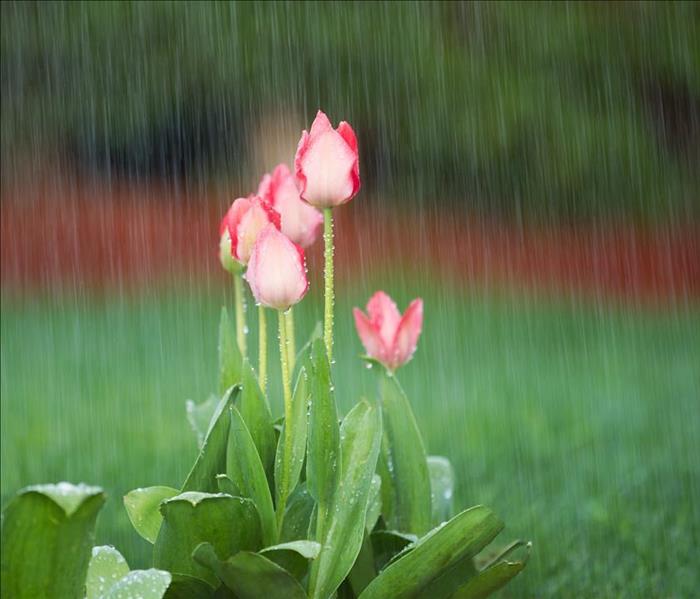 Preparing your home or business for spring showers means taking specific steps to protecting both the interior and exterior of the building.
Preparing your home or business for spring showers means taking specific steps to protecting both the interior and exterior of the building.
South Floridians have been able to enjoy a few scattered days of cool weather. While it is great fun to dig up sweaters and boots for a few days, the locals know that this type of weather is few and far between. If luck would have it, we can probably count on one or two more stretches of cool weather and then before we know it springtime will be here.
For northern regions, the spring season usually means the cold weather is winding down and beautiful days are ahead. In Florida, however, most people understand that the spring season means rain, and a lot of it. The term “spring showers” came to be because of how frequently it rains in March and April. While there are certainly some benefits to that type of weather, like beautiful blooming flowers, there are also some drawbacks.
Preparing your home or business for spring showers means taking specific steps to protecting both the interior and exterior of the building. As the weather gets damper and damper, there will be more and more challenges that come with being a homeowner. As such, keep these tips in mind as you prepare for spring showers:
- Inspect your roof and be sure to check for things like loose tiles, broken shingles, or any gaps or dents
- Take a look at all of your windows and doors to make sure that they are properly sealed
- Check all of the downspouts and gutters throughout the home’s exterior – make sure that they are fully cleared
- Assess the foliage around your home and make sure there are no hazards
- Take a look at your insurance plan and consider purchasing flood insurance
Water damage is a big headache for a homeowner or a business owner. Luckily, taking precautions beforehand can play a big role in preventing water damage from occurring, and thus, saving a lot of money. At SERVPRO of North Palm Beach County, we are water damage experts. As you prepare for the spring season, please keep us in mind if you should experience any water damage in your home or business.
Fall Rain in South Florida
11/25/2020 (Permalink)
 On behalf of SERVPRO of North Palm Beach County, we would like to wish all of you a wonderful fall season!
On behalf of SERVPRO of North Palm Beach County, we would like to wish all of you a wonderful fall season!
When people think of the fall season and South Florida, they typically think of the picture perfect weather. As the temperatures drops a little bit and the humidity levels off, being outside in the Sunshine State during fall is simply the best. Under normal circumstances, now is the time that northerners flocks to South Florida to enjoy this weather. While the pandemic has certainly shifted many people’s plans, Floridians will still get to enjoy the beauty that is fall in the Sunshine State.
Luckily, rain in South Florida during the fall season is relatively light. Coming off of a summer season that is filled with heavy rainstorms, tropical storms, and even hurricanes, the reprieve that comes with fall is welcomed by every homeowner and business owner. So, what can you do to take advantage of the beautiful South Florida weather in the fall? We’ve come up with a “no storm” celebration list below:
- Have a picnic with family
- Host an outdoor event for your business
- Enjoy a morning walk on the beach
- Close down your business a little early and host a work cookout for your staff
- Drive to a new neighborhood and go for a walk to see a change of scenery
- Move some of your store merchandise outside to encourage new business foot traffic
- Eat breakfast, lunch, and dinner outside in your back patio
- Conduct your weekly staff meetings outside
The above ideas are some examples of how you can take advantage of the barely rainy season in South Florida. Whether you use that time to enjoy the outdoors with your family, within your employees, or both, it is important to revel in the fall season. On behalf of SERVPRO of North Palm Beach County, we would like to wish all of you a wonderful fall season!
10 Biggest Storms in History
10/5/2020 (Permalink)
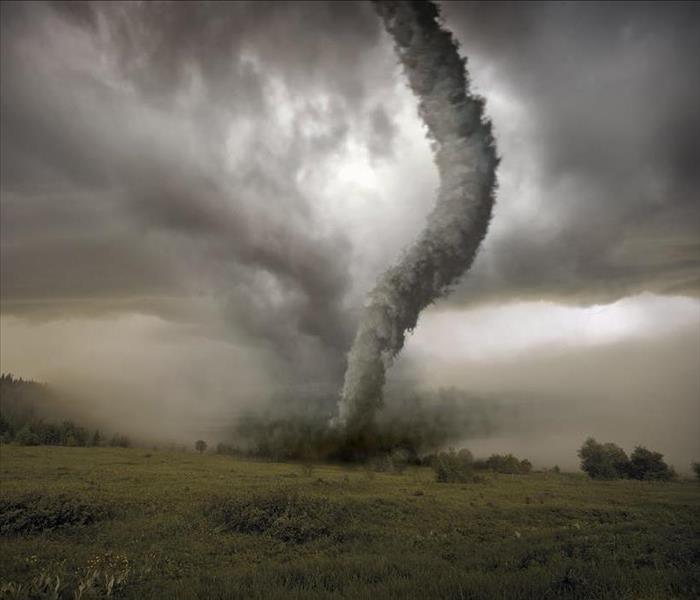 When water temperatures and air pressure changes collide in a particular way there is no telling how extreme a storm may become.
When water temperatures and air pressure changes collide in a particular way there is no telling how extreme a storm may become.
Florida residents have become so accustomed to preparing for and surviving large storms that we often neglect to realize how dangerous they really can be. From hurricanes to cyclones to typhoons, history has proven that massive storms have the potential to be quite deadly. People are typically very fascinated by large, extreme storms. Countless movies have been made, both fictional and non-fictional, recounting dangerous storms that wreaked havoc on areas throughout the world.
We are more familiar with dangerous hurricanes that strikes places like Florida and Louisiana, but across the globe places like the Philippines, Japan, Bangladesh, and India have experienced some of history’s most dangerous and deadly storms. When a storm forms over the eastern Pacific or Atlantic Ocean is it called a hurricane. Whereas the rest of those storms are referred to as typhoons.
When water temperatures and air pressure changes collide in a particular way there is no telling how extreme a storm may become. As such, it is imperative that any and all storm warnings are taken seriously. In no particular order, the following are some of the biggest storms in history:
- Hugli River Cyclone in India
- Super Typhoon Nina in Hualien, China
- The Great Hurricane in Barbados
- Hurricane Katrina in New Orleans
- The Great Bhola Cyclone in Bangladesh
- Haiphong Typhoon in the Gulf of Tonkin
- Hong Kong Rainstorm Disasters in Hong Kong
- Hurricane Liza in Mexico
- Kavali Cyclone in Thailand
- Vargas Tragedy in Venezuela
The above storms took tens of thousands of lives. While no one can truly predict the severity of any storm, being prepared is absolutely critical. Too many people underestimate an incoming storm and then are forced to scramble at the last second. At SERVPRO of North Palm Beach County, our team of storm damage specialists has seen it all and restored it all. If you have experienced water damage due to a large storm, we are here for you. Call us today to learn more!
Lessons from Tropical Storm Isaias
8/3/2020 (Permalink)
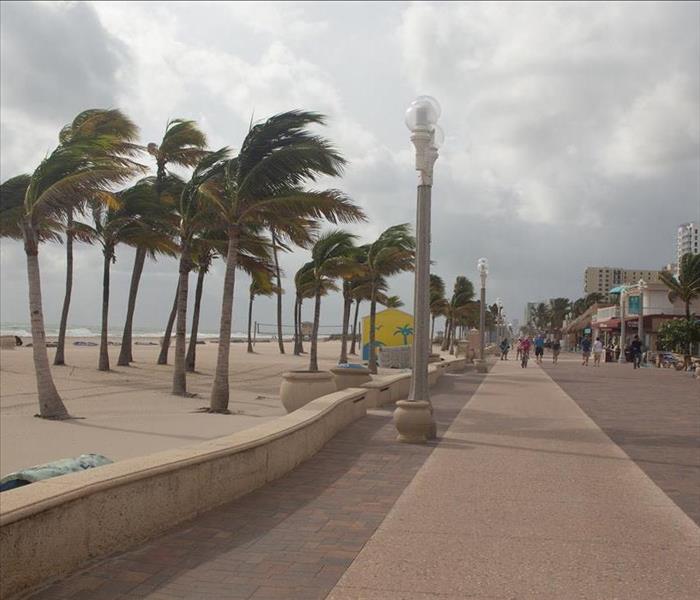 There are lessons to be taken from Tropical Storm Isaias, especially given the fact that it will not be the last storm of the season.
There are lessons to be taken from Tropical Storm Isaias, especially given the fact that it will not be the last storm of the season.
South Florida has grown quite accustom to hurricanes. From storm prep to watching the weather stations constantly to keeping things like bottled water and canned foods on hand year round, it seems like nothing can scare us. In some ways this is a good thing. Being able to maintain a calm and logical mindset before, during, and after a big storm is important. However, this can also backfire. Many Florida residents fail to take a hurricane seriously unless it is a Category 4 or Category 5.
So, what’s the common ground here? How should Floridians approach hurricane season and the storms that will undoubtedly keep coming? Tropical Storm Isaias was our first real taste of hurricane season. The path had it coming right towards the coast and, even so, many failed to do any type of preparations. In the end, the storm grazed the east coast of Florida, leaving the Sunshine State well and fine.
At any rate, there are still some lessons to be taken from Tropical Storm Isaias, especially given the fact that it will not be the last storm of the season. Keep in mind the following the next time we are in the path of a tropical storm or hurricane:
- Prepare sooner rather than later, non-perishables are non-perishable for a reason and there is no harm in buying them early
- Plan for power outages – even though there was relatively no damage, there are still anticipated power outages, so be sure to have your flashlights and generators ready
- Have a plan for outdoor furniture – some of us spent the weekend cleaning out the garage to make room for patio furniture, and that’s a good thing. The time to make arrangements is now.
Luckily, Tropical Storm Isaias spared us. However, it is never too early to begin to get ready for the next storm. Make your plans now and avoid the stress and struggle of rushing to get your home and family ready in the future. As always, SERVPRO of North Palm Beach County is here for you throughout each and every storm. Our water damage and storm damage team is prepped and ready to serve 24 hours a day, 7 days a week.
Getting Your Home Ready for Rainy Season
5/26/2020 (Permalink)
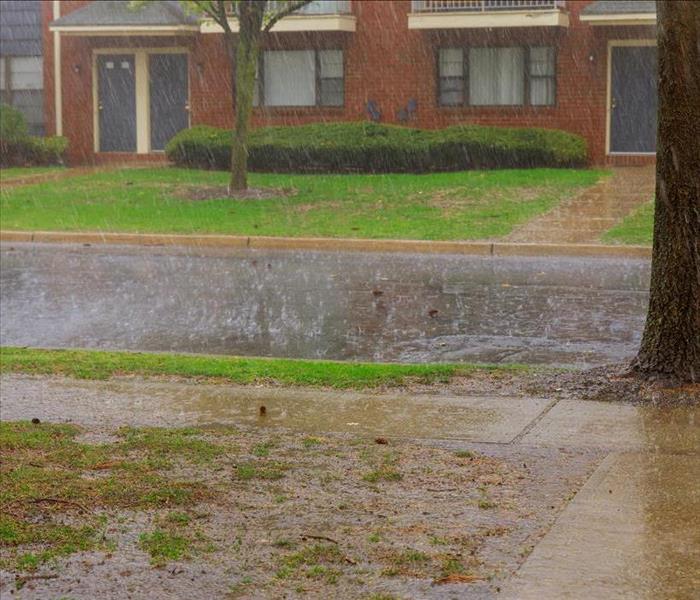 At SERVPRO of North Palm Beach County, we have over three decades of experience in storm damage restoration.
At SERVPRO of North Palm Beach County, we have over three decades of experience in storm damage restoration.
Floridians have grown quite accustom to the “Sunshine State’s” rainy season. June 1st marks the official beginning of the 2020 hurricane season, but South Florida residents have already begun to feel that typical summer weather. The last few days in particular have been marked by a ton of rainfall, some lasting the entire day. With what feels like endless downpours of rain and the knowledge that it has really just begin, it makes sense for South Florida homeowners to begin to prepare themselves accordingly.
Getting your home ready for the rainy season is a lot easier than many think. However, far too many people avoid starting preparations until it is a mad rush to get things done before a major storm. From heavy rainfall to huge gusts of wind, getting your home in tiptop shape is crucial in Florida. The following are some important tips for South Florida homeowners:
- Trim all trees and shrubbery
- Clear out gutters
- Check that all shutters are functioning properly
- Keep supplies handy – things like canned foods, bottled water, flashlights, batteries, and a first aid kit should be readily available
- Verify your insurance coverage
- Review the home for leaks – focus on windows, doors, and walls
- Keep unused electronics unplugged
- Check the roof for leaks
- Fix any damaged or broken roof tiles or shingles
- Make a plan for moving outdoor furniture indoors
- Talk to your family about your evacuation plan
The last couple of days have proven that summer, and this year’s hurricane season, are right around the corner. We recommend spending some time this weekend getting your home prepared and ready to withstand heavy rains and big wind gusts. As always, if your home has sustained storm damage we are here to help. At SERVPRO of North Palm Beach County, we have over three decades of experience in storm damage restoration.
No job is too big for our storm damage experts. For more information, please call 561-881-8784 to speak with storm professional. Remember, it is always better to err on the side of caution when it comes to Florida’s stormy season. Stay dry out there!
Preparing for Florida’s 2020 Hurricane Season
4/10/2020 (Permalink)
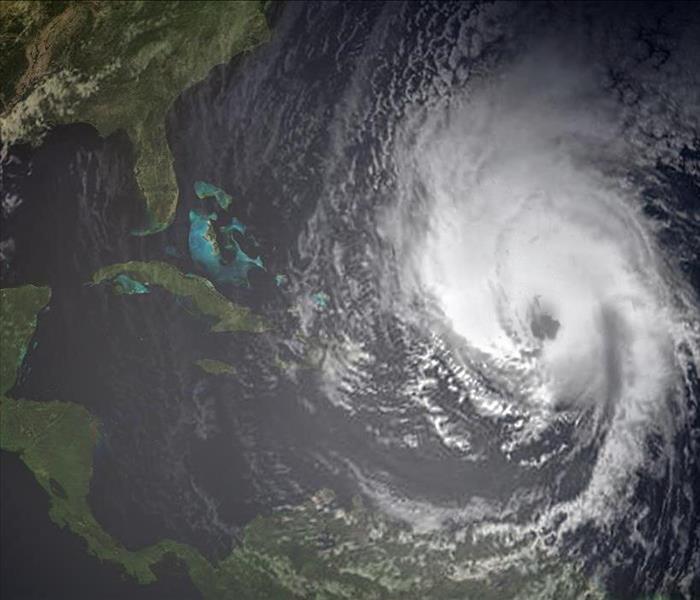 If you have any questions about storm preparation or have any storm damage that you would like to address, we are here for you.
If you have any questions about storm preparation or have any storm damage that you would like to address, we are here for you.
Thinking about Florida’s 2020 hurricane season may be the last thing on your mind right now, and understandably so. Dealing with the fallout of COVID-19 has been a perpetual battle for all of us. Homeowners in South Florida are stuck inside and many are wondering what to do with all of their newfound free time. Well, this might be the perfect time to start thinking about preparing your home for the upcoming hurricane season.
In Florida, the hurricane season will officially begin on June 1st and will end on November 30th. These seasonal forecasts are important to pay attention to, as the exact dates tend to vary slightly from year to year. Whether or not we have a bad hurricane season this year, it is important to prepare. Plus, the next few months almost guarantee heavy rainfall. The following are some important tips to keep in mind to prepare your home for the rainfall coming in Florida’s 2020 hurricane season:
- Check your home for leaks, particularly in the kitchen and bathrooms
- Make sure all gutters are clear
- Ensure that appliances and electrical equipment are stored in a water-free area
- Take note of your home’s drainage efficiency
- Get your roof inspected
- Be on the watch for mold growth
- Check air vents for any leakage
- Make sure all doors and windows are properly sealed
While coronavirus is on the forefront of our minds, it can be easy to lose track of time. However, hurricane season will be here before we know it, so the time to prepare is now. If you have any questions about storm preparation or have any storm damage that you would like to address, we are here for you. With decades of experience in storm damage repair, we are truly the South Florida experts. Please call SERVPRO of North Palm Beach County today to learn more.
Making the Most of Florida Before Rainy Season
1/30/2020 (Permalink)
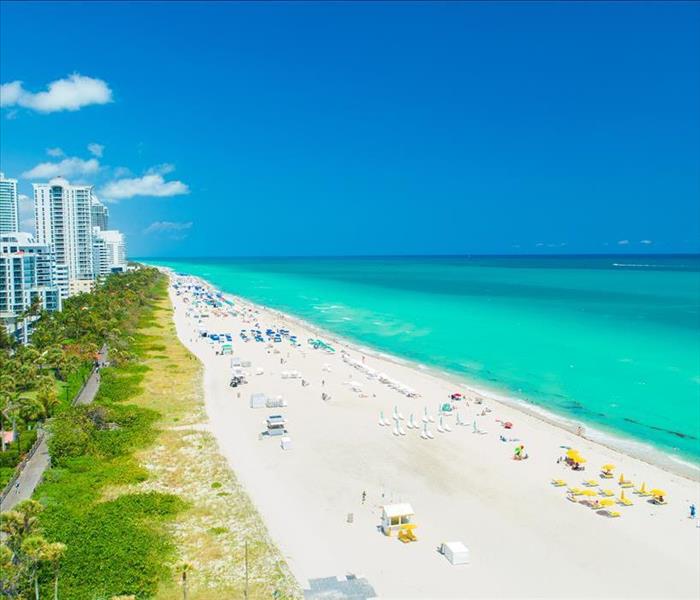 Make the most of this beautiful Florida weather before rainy season spoils your outdoor fun!
Make the most of this beautiful Florida weather before rainy season spoils your outdoor fun!
Florida’s rainy season is officially from May 15th through October 15th and anyone Florida resident knows that during this time of year rain can strike at any moment. In fact, approximately 70 percent of Florida’s annual rainfall comes within that 5 month range. Florida homeowners recognize that this is the time of year to take measures to protect their homes. Clearing the gutters and keeping the lawn tidy are two important steps to take.
While we know a lot about rainy season, we spend little time discussing the months between. April is the month that Florida historically receives the least amount of rain. So, this is the best month to get outside and enjoy the beautiful temperatures and clear skies. Plus, the ocean temperatures typically rise again during this time of year, making it a great time to visit Florida’s beaches.
Weather experts are predicting that Florida will see a slight variation from the norm this spring season. So, April and May will actually be hotter than normal, with rainfall below normal averages in the South Florida. With this in mind, we thought it would be nice to make a few recommendations as to things to do in this beautiful weather. The following are some great outdoor activity ideas for you and your family:
- Visit local parks
- Go on a hike along a new trail
- Do an impromptu beach day
- Enjoy a family walk
- Wake up early and catch the sunrise from the pier
- Spring for a boat day and some fishing
- Head to the Everglades for some canoeing
- Jump on your bicycles and head to the ice cream shop
Spring season tends to fly by and May 15th will be here before you know it. So, make the most of this beautiful Florida weather before rainy season spoils your outdoor fun. And remember, if your property has sustained any storm damage SERVPRO of North Palm Beach County is here to help. Call us today for a free consultation!
11 Fun Facts about Thunderstorms
11/25/2019 (Permalink)
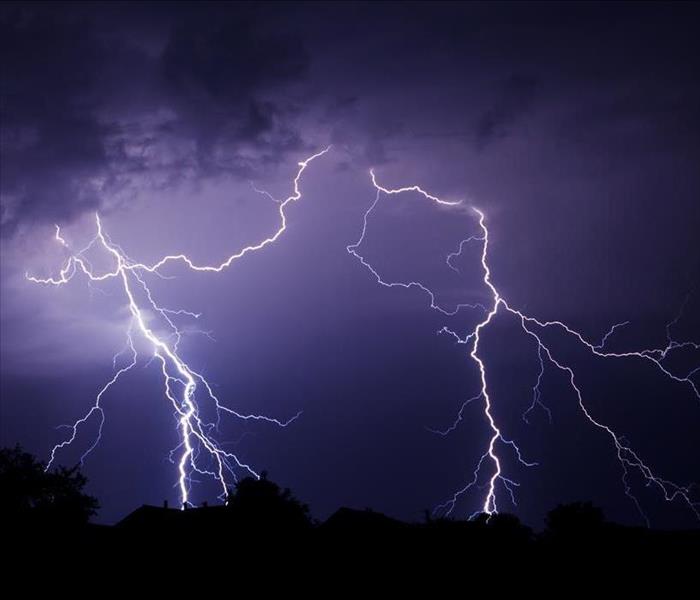 At SERVPRO of North Palm Beach County, we are dedicated to serving our community during the toughest of storms.
At SERVPRO of North Palm Beach County, we are dedicated to serving our community during the toughest of storms.
Florida residents have been through a countless number of storms. From summer’s rainy days to hurricanes to unexpected rainstorms in the middle of winter, Floridians know that a storm always has the potential of hitting. While some storms last 10 minutes and others last hours, their impact can be felt no matter what. South Florida homeowners have grown accustom to dealing with storms of all shapes and sizes. As such, they are likely to underestimate even some of the bigger ones.
The more familiar a person becomes with storms, the more unfazed they become when they strike. In some cases, this is a good thing. Being used to dealing with Florida storms means never panicking and keeping a level head. However, this familiarity can also serve to dull the potential damage that major storms bring. As such, we have collected some interesting facts about storms to not only entertain, but to also highlight how important it is to take them seriously.
The following are a few of our favorite facts about thunderstorms:
- Rain actually pulls storms down
- Lightning is seen before thunder because light travels faster than sound
- A fear of thunder and lightning is called Astraphobia
- Lightning has an average temperate of 36,000 degrees Fahrenheit
- By counting the number of seconds between a flash of lighting and the sound of thunder, you can calculate how many miles away it is (second divided by 5)
- They eye of a storm is extremely calm, even sunny in some cases
- A thunderstorm produces about 6,000 lightning strikes each minute
- There are three types of possible thunderstorms
- Lightning is actually hotter than the sun’s surface
- A cumulus cloud in the sky weighs over 1 million pounds
- Thunder can happen during snowstorms too
Storms vary drastically in size, severity, and prospective damage that they cause. At SERVPRO of North Palm Beach County, we are dedicated to serving our community during the toughest of storms. Our storm damage team is prepared to handle any type of property damage that your home or commercial location may have suffered. Give us a call today to learn more!
Being Prepared for the Next Hurricane
10/7/2019 (Permalink)
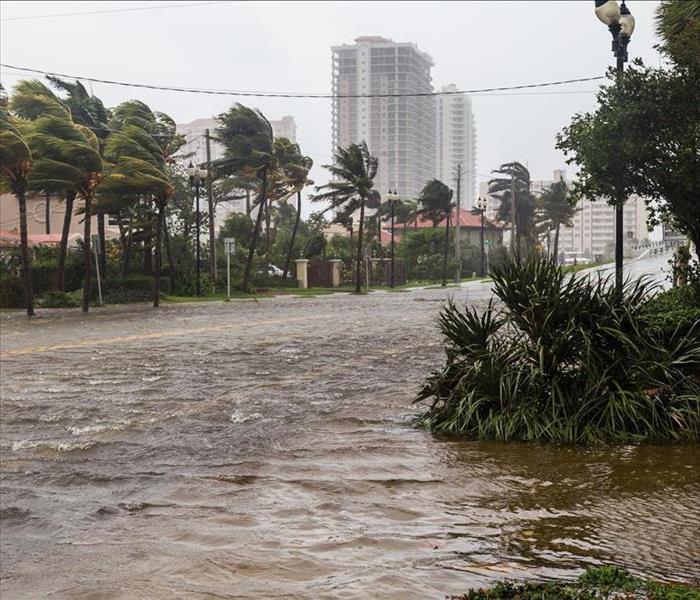 Being proactive is the best defense against an upcoming major storm.
Being proactive is the best defense against an upcoming major storm.
South Florida really lucked out with Hurricane Dorian and avoided any real damage. Our neighbors to the south, however, were not so fortunate. The Bahamas suffered from massive amounts of damage and destruction. We made it a priority to donate to the area to help them get back to normal life as quickly as possible. While the Bahamas are still reeling from Hurricane Dorian, it is important for all of us to begin thinking about the next storm.
Preparing for the next hurricane is important for all South Florida residents. While disaster planning may seem difficult following a storm that missed us, it is essential that all homeowners still do their best to prepare for the next hurricane now, before it is too late. The following are some valuable tips to being prepared for the next hurricane:
- Keep emergency supplies like water, extra batteries, first aid supplies, etc. on hand now. The best time to shop for non-perishable hurricane items is now, before the rush prior to a looming storm.
- Plan your evacuation route now. The earlier you make these arrangements the better, as this will alleviate confusion and frantic behavior before the next hurricane.
- Take inventory of all important documents and store them in an easily accessible location.
- Go through the exterior of your home and take care of issues in areas like the roof, landscaping, doors and windows, and any potentially hazardous item on the outside of the home.
- Go over your insurance policies now and make sure you fully understand your coverage.
Instead of running to Publix to scour the empty shelves when the next hurricane is announced, do it now and avoid the stress and anxiety of last minute purchases. Being proactive is the best defense against an upcoming major storm. At SERVPRO of North Palm Beach County, we specialize in storm damage repairs and restoration. If you think you need an issue addressed, contact us immediately before another hurricane strikes our area.
Protecting Your Lawn from Storm Water
8/7/2019 (Permalink)
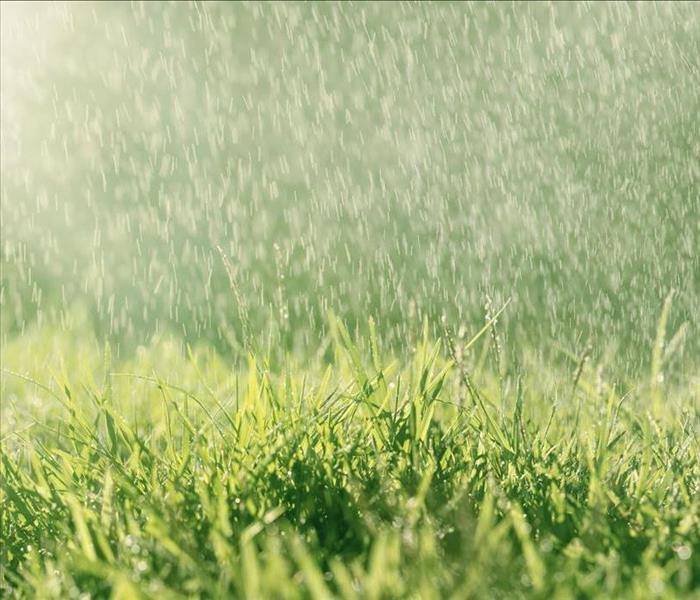 As a general rule of thumb, be sure to direct the runoff water away from the home’s foundation to best protect it.
As a general rule of thumb, be sure to direct the runoff water away from the home’s foundation to best protect it.
South Florida residents have seen the typical daily thunderstorms this summer and, as usual, that means massive amounts of water. While some storms last a few minutes and others last a few hours, the water that they bring can have a lasting impact on your home and your lawn. Most hurricane and storm preparation involves safeguarding the inside of your home, and that’s a good thing. But what about the exterior of your home? Have you considered how South Florida rains are effecting your lawn and backyard?
The landscaping in North Palm Beach County and the surrounding areas is remarkable. Homes boast luscious grass and beautiful flowers. Sadly, storm water runoff threatens the integrity of all of those things. While they certainly need water to survive, too much water can cause a major issue. The following are some tips to protect your lawn from storm water during Florida’s stormy season:
- Consider planting a rain garden which will catch runoff and slow it down
- Replace concrete slabs in the backyard and front lawn with things like pavers or bricks to absorb the water better
- Purchase heavy mulch
- Redirect your rain spouts
- Dig up a trench
- Cover up any bare soil
- Install a rain barrel
Utilizing one or more of the above tactics will help significantly in your efforts to minimize runoff water from Florida storms. As a general rule of thumb, be sure to direct the runoff water away from the home’s foundation to best protect it. If you have experienced storm damage this summer, SERVPRO of North Palm Beach County is here to help. Our storm damage and water damage restoration experts are trained to handle issues both large and small, commercial or residential. Contact our office today to learn more about your options!
Storm Tips for Pet Owners
5/27/2019 (Permalink)
 It is important to include your pets in your storm planning now to avoid overlooking them in the event of a natural disaster.
It is important to include your pets in your storm planning now to avoid overlooking them in the event of a natural disaster.
Preparing for a hurricane as a South Florida homeowner is stressful. There are what seems like a million tasks to complete and that never-ending list typically takes a lot out of everyone in the family. When a storm is projected to hit your area, you probably have a go-to mental list of things that need to be done. From putting up hurricane shutters to buying the necessary food items and everything else in between, your focus is more than likely on all of the humans in your family. But what about your pets?
We all love our furry friends, but in times of crisis and panic they are usually the first ones forgotten about. As such, it is important to include your pets in your storm planning now to avoid overlooking them in the event of a natural disaster. The following are some great storm tips for pet owners in South Florida:
- Choose a safe location to bring your pet – this may be a safe room or some other interior room in the home
- Determine where you will go in the event of an evacuation and call ahead to ensure that the hotels in the area allow pets
- Know where you pet carrier is and pack extra food when packing food for the family
- Make a pet emergency kit including things like bottled water, medications, canned food, vaccination certificates, copies of tags, health records, and their favorite toy
- Make sure that your pet’s tag and microchip are current and accurate in the event of separation
- Be sure that the safe location for your pet is free from any poisonous substances that they may accidentally eat
Planning for a pet is understandably lower on the priority list than your human family members when a storm is on the way. However, thinking through the best method of protecting them now is the key to keeping them safe if and when disaster strikes. Keep the above tips in mind as your prepare for this year’s hurricane season!
It’s Never Too Soon for Hurricane Preparations
4/3/2019 (Permalink)
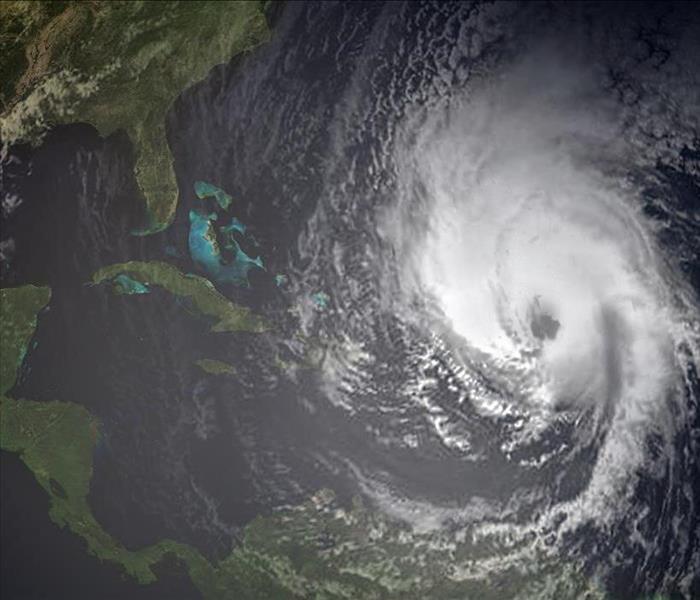 Preparing for hurricane season early has major benefits.
Preparing for hurricane season early has major benefits.
The spring season has just begun and for many that means flowers blooming and afternoon rain showers. South Floridians have grown accustom to the seamless shift from the “winter” months to the spring months. From days spent outside to nights enjoy the comfortable air, hurricane season is probably the last thing on your mind. However, it’s important to think about hurricane preparedness now as opposed to the month right before the storm season begins.
Many Floridians have become numb to the dangers associated with major storms. With years and years of experience in last minute shifts of the eye and warnings that fade to nothing, it’s easy to get jaded and ignore the need to prepare. Unfortunately, those who neglect to get ready their homes for hurricane now may end up regretting it in the long run. The truth is that preparing for hurricane season early has major benefits.
First and foremost, early hurricane preparation will put you and your family in the safe position of being prepared for anything. There is no telling when a major storm will hit and having the comfort of knowing that your preparations are complete will give you valuable peace of mind. In addition, stocking up on supplies now will save you money. Get together a list of essentials like flashlights, batteries, and nonperishable foods and plan to purchase them as they go on sale. Finally, generator prices tend to skyrocket around hurricane season and their stock may be low at time too. Be sure to look into buying a generator now to allow for plenty of time for research beforehand.
At SERVPRO of North Palm Beach County, our storm damage specialists have years of experience in cleaning and restoration following a major storm. Keep us in mind this upcoming hurricane season and feel free to call 561-881-8784 with any storm damage questions!
9 Interesting Facts About Storms
2/6/2019 (Permalink)
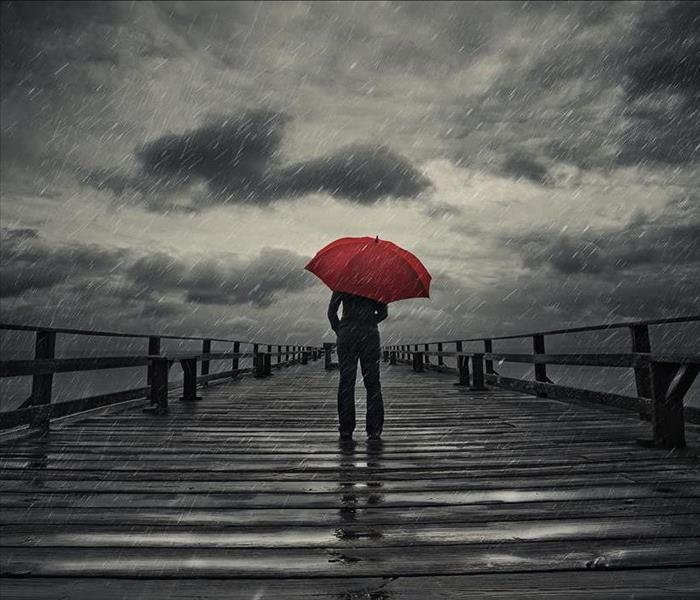 Homeowners in the Sunshine State have likely never taken a moment to think about some of the more interesting storm facts.
Homeowners in the Sunshine State have likely never taken a moment to think about some of the more interesting storm facts.
South Floridians have become so accustom to storms that they seldom stop to think about the details. From what seems like constant hurricane preparation to feeling numb about big storms coming, homeowners in the Sunshine State have likely never taken a moment to think about some of the more interesting storm facts. With that in mind, we have put together a list of unique, exciting pieces of information about hurricanes.
The following are 9 interesting facts about storms:
- In 1943, someone flew into a hurricane during World War II
- In 1994, Tropical Storm John lasted for an entire month
- Every minute, approximately 2,000 thunderstorms touch down on Earth
- For over 300 years, the planet of Jupiter has had an active hurricane
- Jupiter’s hurricane is larger than Earth
- Hurricane Ivan caused a record-breaking 127 twisters
- Slowly moving hurricanes are actually more damaging than fast ones
- During a hurricane, each second that passes releases the amount of energy in 10 atomic bombs
- The most storms in an Atlantic season occurred in 2005
Intense tropical storms, otherwise known as hurricanes, have become one of Florida’s most prominent identifiers. While we often discuss things like tips for hurricane preparation and how to protect your home from storm damage, it is thought-provoking to stop and consider some of the above interesting facts. Did we miss any storm facts that you would like to share? Let us know!
Benefits of Impact Windows for Storm Protection
1/15/2019 (Permalink)
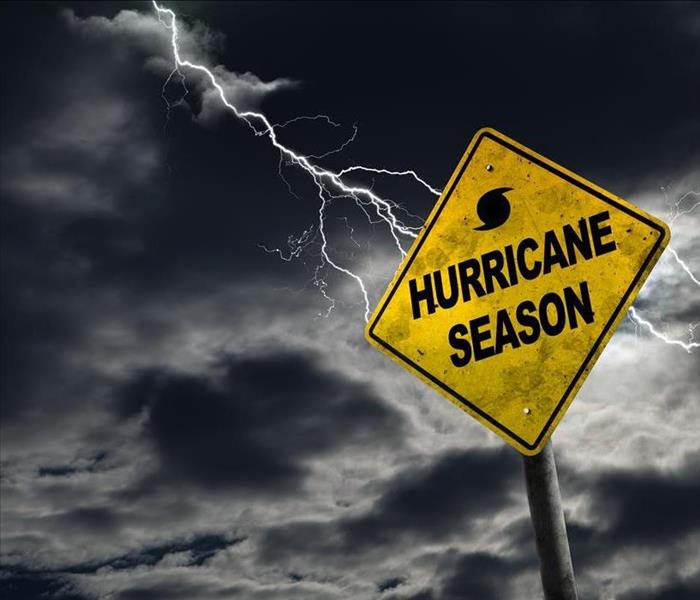 No matter how you plan to protect your home during Florida’s hurricane season, it is important to have a plan in place.
No matter how you plan to protect your home during Florida’s hurricane season, it is important to have a plan in place.
Hurricanes are no stranger to South Florida that means that homeowners throughout the region have grown accustom to taking extra precautionary measures to weather the storm. Typically used on both windows and doors, impact glass has grown tremendously in popularity over the last several years. From the sleek look to the functional use, having hurricane impact windows installed in your home can serve many benefits to you and your family.
While some advantages of impact glass may be more apparent than others, the following are the most notable benefits of impact windows for storm protection:
- Increased storm protection during hurricane season
- Better energy efficiency, thus saving you money
- Beautiful appearance
- Only a one-time installation required
- Reduce outside noise from entering the home
- Increased home security
- UV protection to protect the home’s valuables from the sun
- Discount on homeowners insurance
While installing hurricane impact windows and doors can be quite an expensive investment, research has shown that it pays off in the long run. No one wants to be scrambling outside putting up hurricane panels in the moments before a big storm. As such, impact glass helps to ease the minds of homeowners during hurricane season and beyond.
No matter how you plan to protect your home during Florida’s hurricane season, it is important to have a plan in place. Even in 2019, far too many people are left running to the home store hours before a storm to purchase protective materials. Take some initiatives during these winter months to ensure that you and your family will be safe the next time a big storm hits South Florida.
Getting Your Home Hurricane Ready In Winter Months
11/26/2018 (Permalink)
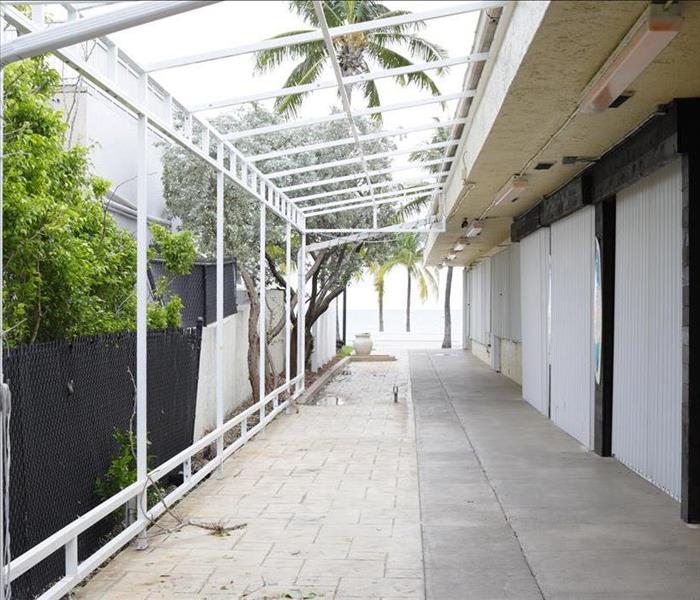 Do the work now, save money, and rest easy during 2019’s hurricane season!
Do the work now, save money, and rest easy during 2019’s hurricane season!
Florida homeowners may think it is crazy to start preparing for hurricane season right now. With the winter months approaching, storms and hurricanes are likely the last thing on the minds of South Florida residents. However, the winter months are actually the best time of year to do the major house work required to prepare your home for next year’s hurricane season.
First of all, hurricane preparation tools and equipment can be expensive, but purchasing them now is actually a great way to save. We recommend taking advantage of the winter months to purchase things like:
- Hurricane shutters
- Generators
- Surge protection
- Extra plywood
In addition, this is a great season to check for cracks in the foundation of your home. Walk around the perimeter and assess the concrete for any type of stress. Finally, we also recommend using this storm downtime to review your current insurance policy. Things like flood insurance are likely not covered under your homeowners insurance plan.
Being proactive in the during the winter months is the best way to ensure that your home is ready for hurricane season next year. In addition, there is no better way to save than taking advantage of this cost-effective storm plan. Scrambling last minute to prepare for hurricane season is a recipe for disaster. Do the work now, save money, and rest easy during 2019’s hurricane season!
Disaster Planning for Senior Citizens
10/5/2018 (Permalink)
 From hurricanes to fires and from rainstorms to power outages, there is no such thing as being too prepared.
From hurricanes to fires and from rainstorms to power outages, there is no such thing as being too prepared.
Storms in South Florida are almost always unexpected and they often pose a serious threat, especially for the senior citizen community. From preparing your home and belongings to determining a plan if an evacuation is ordered, seniors must develop a plan of action when an emergency strikes. First and foremost, it is important to lean on family, friends, and neighbors when possible. In addition, relief workers and local officials may also be available to help you deal with a disaster. However, there are certainly times when these groups of people will not be able to reach you right away and that is when your storm preparedness planning comes in.
The first step in disaster planning is to develop and organize the three main steps to preparedness:
- Get a disaster kit: purchase a supplies kit with food, water, medications, and emergency supplies that could last up to three days. Be sure this kit is light enough for you to carry, or better yet, stored in a bag on wheels. Keep a folder with all of your vital documents so that you can easily grab it if you need to leave quickly. Also, be sure to consistently update your disaster kit every six months to ensure that you have all that you need as your needs may change.
- Develop a plan: set up a meeting with your family and friends to determine exactly what would happen if a storm hits. Be sure to carry your family’s contact information in your wallet so that you have it at all times. In addition, discuss escape routes and proper meeting places so that you have a specific routine narrowed down.
- Stay informed: listen for updates from your community as well as from local authorities when a disaster situation is on the horizon. Listen to the television or radio weather station or local news to stay informed on potential evacuation orders or other important information.
Being caught in a disaster unprepared is truly a nightmare. When a sudden emergency strikes, it is critical to be ready for anything. From hurricanes to fires and from rainstorms to power outages, there is no such thing as being too prepared. As we round out the final weeks of storm season, double-check your preparedness routine and ensure that you are prepared.
Some of the Worst Hurricanes of All-Time
8/23/2018 (Permalink)
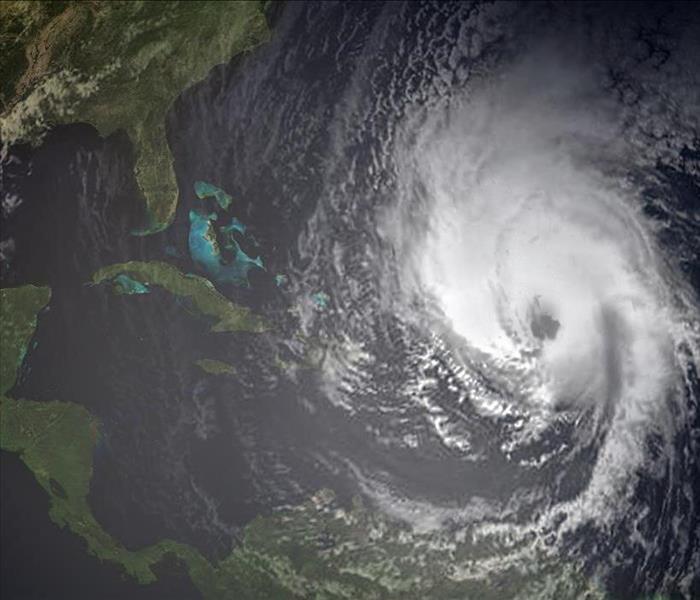 Hurricane season has been good to South Florida residents in 2018, but it is important to remain vigilant and continually monitor the weather.
Hurricane season has been good to South Florida residents in 2018, but it is important to remain vigilant and continually monitor the weather.
Florida residents are all too familiar with hurricane season and the massive destruction that it can cause. Unfortunately, the 2017 hurricane season broke all kinds of records in regard to damage and disaster. With the most notable storms of Harvey, Irma, and Maria, people across the globe have suffered tremendously at the hands of one of nature’s scariest, most unpredictable weather threat. In many cases, the damages incurred following a particularly bad hurricane create lengthy, sometimes permanent, effects on the physical locations, the community members, and the economy.
While troubling to recall some of the most destruction storms, it is important to remember that hurricanes are something to be taken very seriously. In Florida, Hurricane Andrew was a big wake-up call for many. As such, remembering some of the biggest storms of the past can serve to enhance preparation in the future. In no particular order, the following are some of the worst hurricanes of all-time:
- Katrina, 2005
- Galveston, 1900
- Harvey, 2017
- Andrew, 1992
- Camille, 1969
- Sandy, 2012
- Irma, 2017
- Ike, 2008
- Maria, 2017
- Gilbert, 1988
- Florida Keys, 1935
- Mitch, 1998
Hurricane season has been good to South Florida residents in 2018, but it is important to remain vigilant and continually monitor the weather. Preparedness is extraordinarily important to protect your loved ones, yourself, and your property. Coastal residents must be even more prepared and aware of the current and future weather. Be sure to check back on our blog for updated tips on preparing your home for hurricane season!
Preparing Your Home for a Big Storm
8/7/2018 (Permalink)
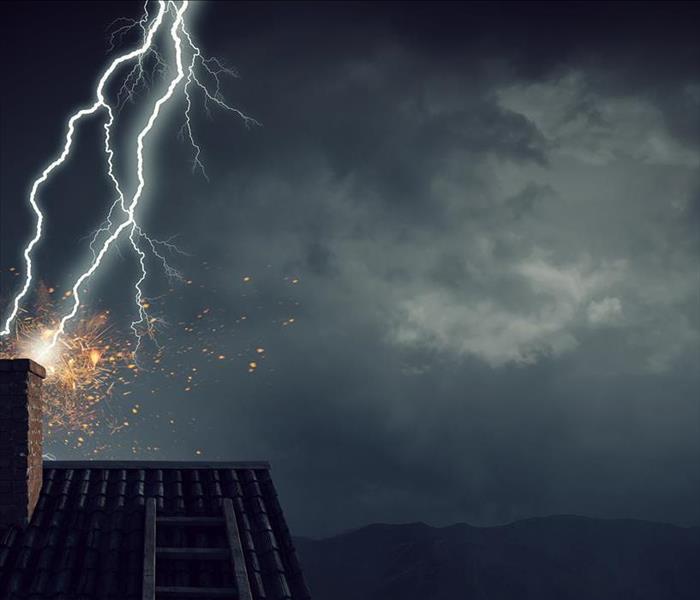 If heavy rains or storms have damaged any part of your home or property, contact SERVPRO today to speak with our storm restoration team!
If heavy rains or storms have damaged any part of your home or property, contact SERVPRO today to speak with our storm restoration team!
The middle of summertime means almost daily rainstorms. In South Florida, the rain seems to come as quickly as it leaves and that’s a good thing. Unfortunately, however, we all know how much impact even short-lived heavy rains can have on the roads, on the neighborhoods, and on individual homes across the county. While some storms are so massive they cause unpreventable damage, the majority of South Florida storms will cause minimal to no damage if the homeowner is readily prepared for them to occur. There are a number of home maintenance tips that can help to mitigate potential storm damage, especially for those who live in flood-prone areas and neighborhoods.
Preventative measures can save thousands of dollars in storm damage repairs. As such, keep the following tips in mind when preparing your home for a big storm:
- Make sure the fence surrounding your home is secured
- Clear your gutters of all debris and ensure they are faced to drain away from your home
- Remove any dead tree limbs and trim trees near on the property
- Place any valuables in waterproof containers
- Gather documents like insurance policies, birth certificates, health/medications paperwork, and important phone numbers
- Check your roof’s condition
- Secure all loose items around the property
- Protect important areas like your windows and doors
Being prepared for a big storm means being proactive in safeguarding your property, both inside and outside of the home. Those living near the coastline must pay extra attention to the news to determine if they need to evacuate their neighborhood. If heavy rains or storms have damaged any part of your home or property, contact SERVPRO today to speak with our team of storm restoration professionals!
Flood Control Facts for You
7/3/2018 (Permalink)
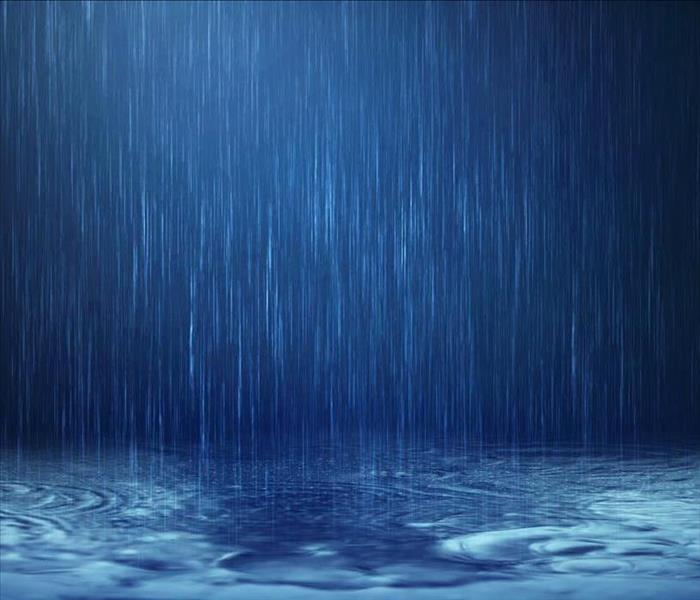 Being an informed member of your community is essential to keeping your local area and your home safe from severe flooding.
Being an informed member of your community is essential to keeping your local area and your home safe from severe flooding.
South Florida home owners are all too familiar with major storms and the flooding the follows them. From heavy winds and heavy rains to inefficient drainage systems, experts have made some frightening predictions for the future of South Florida homes. The Union of Concerned Scientists (UOCS) recently released a report pointing to the potential of chronic flooding effecting one million Florida homes by the year 2100. These warnings are certainly scary and they make most South Florida residents think about how to handle flooding today and tomorrow. One of the most important things to consider is the concept of flood control and how you can use it to your home’s advantage.
Understanding some of the basics of quality flood control is important to minimizing potential dangers that stem from major storms. As we find ourselves in the thick of hurricane season, Florida residents should learn the following flood control facts:
- Drainage systems are always in operation in order to keep water elevation desired level
- The drainage district is in control and cannot open its discharge control to the community
- Opening the discharge control to the community is only authorized in emergency situations
- Older communities typically suffer from severe flooding due to their older storm water systems
- Homeowners can play a role in preventing flooding by avoiding putting trash bags in road swale and avoiding throwing debris in canals or lakes
Being an informed member of your community is essential to keeping your local area and your home safe from severe flooding. Working together as a community to keep canals and lakes free from debris and not placing trash bags in road swales are just a few ways to play a part in controlling flooding. Florida is surrounded by water and with hurricane seasons getting increasingly more potent, it is important to stay educated on flood control.
Fast Facts on Florida Storms
2/6/2018 (Permalink)
 We have the storm damage restoration experience and specialized equipment to restore your home or business back to pre-storm condition.
We have the storm damage restoration experience and specialized equipment to restore your home or business back to pre-storm condition.
With Hurricane Irma in our rearview mirror, it’s easy for many Florida residents to forget about how scary and dangerous hurricane season can be. February is a great time to remind yourself and your family members of how important storm preparation is for safeguarding your home and keeping your loved ones protected. While summer is often the season most associated with hurricanes, tornadoes, and all types of storms, it is important to keep in mind that the spring season also brings with it the threat of storms. The reality is that Florida sustains more hits from hurricanes than any other state in the country. Living in the Sunshine State has many, many perks, but sustaining regular hurricanes is certainly one of the negatives to residing here.
Understanding some basic facts about Florida storms is essential in being prepared both physically and mentally for an unexpected hurricane or tornado. Consider the following fast facts on Florida storms:
- Hurricane Irma made landfall at 115 knots in Cudjoe Key
- Anything above a Category 3 is considered to be a major hurricane
- When tornadoes take place in the spring season they are more likely to strike at night
- It is possible for a tornado to form inside of a hurricane
- In any given moment there are around 1,800 thunderstorms happening around the globe
- Thunderstorm clouds can reach more than 20,000 feet high
- Moisture, unstable air, and lift create the basic thunderstorm
- Cumulonimbus clouds produce thunderstorms
- Lightning due to thunderstorms kills more people each year than tornadoes do
- A “derecho” refers to a severe storm that encompasses a large area, has high winds, and lasts a very long time
Being prepared in the event of an unexpected storm is imperative. SERVPRO of North Palm Beach County responds immediately to your flood and storm damage emergencies. We have the storm damage restoration experience and specialized equipment to restore your Palm Beach Gardens home or business back to pre-storm condition.
Protecting Your Home from Damage in Heavy Rain
11/6/2017 (Permalink)
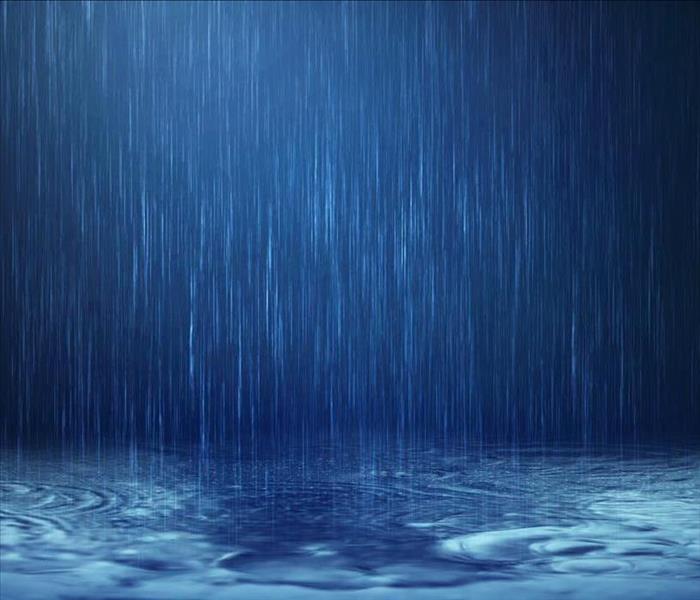 Proactively protecting your home from water damage or storm damage in heavy rains is extremely important.
Proactively protecting your home from water damage or storm damage in heavy rains is extremely important.
Hurricane season technically ends on November 20th, but experienced Florida residents know that heavy rains can (and do) come during any season. When a serious storm comes your way, heavy rains can wreak havoc on your property, both inside and outside of your home. If it seems like it’s been even wetter than usual in South Florida lately, that’s because it has been! Based on new reports from the South Florida Water Management District, South Florida hasn’t seen this much rain in 86 years. Storm surges of heavy rains often mean flooding in your neighborhood and it’s important to be aware of the potential dangers associated with this extra rainfall and water.
Rain damage can be very costly if not handled both immediately and correctly. Far too many homeowners become lazy about storm damage and then are left to deal with additional issues like mold growth. As such, keep the following tips in mind for protecting your home from damage in heavy rain:
- Clean your gutters regularly
- Pay attention to your home’s drainage efficiency
- Check your windows and doors for proper sealant
- Have your roof inspected
- Fix any leaks throughout your home, especially in the bathrooms and kitchen
- Watch out for water leakage through your air vents
- Look out for mold growth, which often indicates water damage
- Be aware of potential health hazards associated with rain damage
- Make sure that all electrical equipment and appliances are in a water-free location
Proactively protecting your home from water damage or storm damage in heavy rains is extremely important. From both a safety and cost-savings perspective, ensuring that your home is safeguarded during Florida’s rains is beneficial in a variety of ways. If your home has suffered storm damage in any recent heavy rains, contact our team of water damage professionals today!
Staying Safe and Smart in Hurricane Irma
9/7/2017 (Permalink)
 Good luck to all and remember that SERVPRO is here for all of you during and after the storm!
Good luck to all and remember that SERVPRO is here for all of you during and after the storm!
Florida residents are no strangers to hurricanes and the massive damage that they can cause. With Hurricane Irma looming, it’s difficult avoid the memories of past hurricanes that left homes in shambles. Devastation is something that sticks with a family. Nevertheless, if the rebuilding efforts after monster storms like Hurricane Andrew taught us anything, it taught us to prepare, prepare, and then prepare some more. While its exact path is still unknown, there is no way around the fact that Hurricane Irma is going to be a seriously catastrophic storm. At this point, emergency plans should already be in place as you prepare your home and your family for the massive hurricane heading our way.
Weather experts have warned that wind, not flooding, is going to be the main concern this weekend. As such, the following steps should be taken today and tomorrow to ensure that you and your family stay safe and smart in Hurricane Irma:
- If you have an evacuation plan, now is the time to set it in motion. Map out your route and hit the road as soon as possible.
- Make sure your gas tank is full.
- Get water (1 gallon per day per person), non-perishable food items (enough for 3-7 days), and flashlights.
- Keep all important documents (insurance policies, passports, birth certificates, Social Security cards, emergency contact phone numbers, health insurance cards, and any other important identification, financial, or property paperwork) in a waterproof safe box or some type of protective case.
- Photograph every room and valuable item inside of your household, as well as the entirety of the outside home. Photographs will be critical when filing insurance claims after the storm.
- Put up your shutters now, before the rain starts to come down.
- Run a load of laundry and dishes today before the power goes out.
- All patio furniture must be brought inside.
- Secure your garage door.
- Trim any branches or damaged trees that look like they may fall once the winds pick up.
Do not forget to prepare your pets for the storm. In addition, make sure that your first-aid kit is handy in addition to toilet paper, medications, cash, and fully charged electronics. Hurricane Irma is likely going to cause major destruction to South Florida homes. The focus right now must be safety for you and your family. If you have any questions, please reference local news stations or the NOAA Weather Radio for updates. Good luck to all and remember that SERVPRO is here for all of you during and after the storm!
Interesting Facts about Hurricanes in Florida
8/2/2017 (Permalink)
 Take a look at some unique and interesting facts about hurricanes in Florida.
Take a look at some unique and interesting facts about hurricanes in Florida.
Floridians have grown so accustom to experiencing hurricane season that they rarely stop to think about hurricanes themselves. While any natural disaster can be scary and destructive, they also have the potential to be beautiful acts of nature. From flash floods to power outages, it’s easy to get lost in the negative elements of Florida hurricanes and the damage that they cause to our homes, businesses, and community as a whole. Have you ever taken a moment to reflect upon your hurricane knowledge? When is the last time you stopped to catch up on interesting hurricane facts?
If the answers to these questions leave you wanting more, keep reading. As storm damage experts, our team at SERVPRO has taken the time to get to know hurricane extremely well. Take a look at some unique and interesting facts about hurricanes in Florida:
- Warm water is used as a source of energy to create hurricanes
- The eye of a hurricane can range anywhere from 2 miles in diameter to more than 200 miles in diameter
- Other names for hurricanes include tropical storms, cyclones, and typhoons
- Around 33 percent of cat and dog owners do not have a hurricane disaster plan in place for their pets
- When the waves of the hurricane are extremely heavy they are referred to storm surges
- In 1953, the National Hurricane Center began naming storms officially
- Approximately 40 percent of hurricanes in the United States strike Florida
- The eye of a hurricane is typically calm
- More often than not, the right side of a hurricane is most dangerous
- Tornadoes have been caused by hurricanes
- When the wind speeds of a storm hit 74 mph, the storm is considered to be a hurricane
- Category 5 hurricanes, the most dangerous of all, are marked by winds that exceed 156 mph
- Hurricane Andrew, Florida’s most catastrophic hurricane, was a Category 5
- Naming hurricanes helps with communication amongst the general public as well as weather forecasters
Being educated on hurricanes is important for any Florida resident. Understanding the history of these storms can help to calm nerves, manage expectations, and lead to better decision-making in the event of a bad storm. Be sure to continue your hurricane education to keep you and your family safe this summer.
After a Florida Storm Safety Tips
7/1/2017 (Permalink)
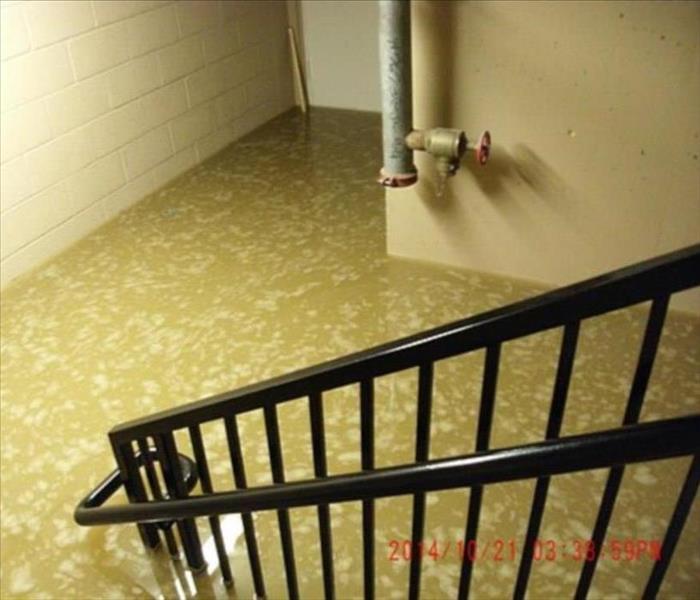 SERVPRO is here to get your home back to pre-storm condition as quickly and efficiently as possible!
SERVPRO is here to get your home back to pre-storm condition as quickly and efficiently as possible!
From serious thunderstorms to hurricanes and everything in between, South Florida homeowners must be prepared for the worst during the summer months. When it comes to rainy season and hurricane season in Florida, most people focus on preparations before a storm strikes. While this is critically important for home protection, attention must also be paid to what to do after a Florida storm. It goes without saying that keeping you and your family safe is the number one priority before, during, and after a storm. After a serious storm hits and you’ve make sure that your family is safe, thinking about what steps to take from there on out is important.
Assessing the damage to your home must be done extremely carefully, as things may have shifted during the storm and are potential hazards. Keep the following tips in mind for what to do after a Florida storm:
- Listen to your local news via radio or television as well as the NOAA Weather Radio for important instructions and/or announcements
- If you had evacuated, do not re-enter your home until your area has been declared safe
- Do not drive into any flooded areas
- Do not drive through barricaded or closed roads
- Only stand on firm ground, avoid any areas with moving water
- Carefully check your appliances, water, gas, and electrical lines for any damages
- Do not consume any food or beverage unless you are sure that it is not contaminated
- Use flashlights for light while inspecting your damage, never use open flames of any kind
- Avoid using the telephone unless you are reporting a life-threatening emergency, keeping the phone lines open is important
- Do not use your generators indoors
- Make sure any electrical items are completely dry before turning them on
- Keep your pets under close watch
- Report any downed power lines
- Help people in your community who need is (especially the elderly or those with special needs)
Once you and your family feel safe and secure, it is a good idea to take photographs or videos of your home and the surrounding areas. Documenting the damage and recording losses is a good idea for both inside and outside of your home. In addition, be hyper-aware of waterborne bacterial contaminations, these are common after major storms and can be a major health threat. The final step in what to do after a storm is to contact your local storm damage cleanup and restoration professionals. SERVPRO is here to get your home back to pre-storm condition as quickly and efficiently as possible!
Storm Safety Tips for Florida Residents
6/27/2017 (Permalink)
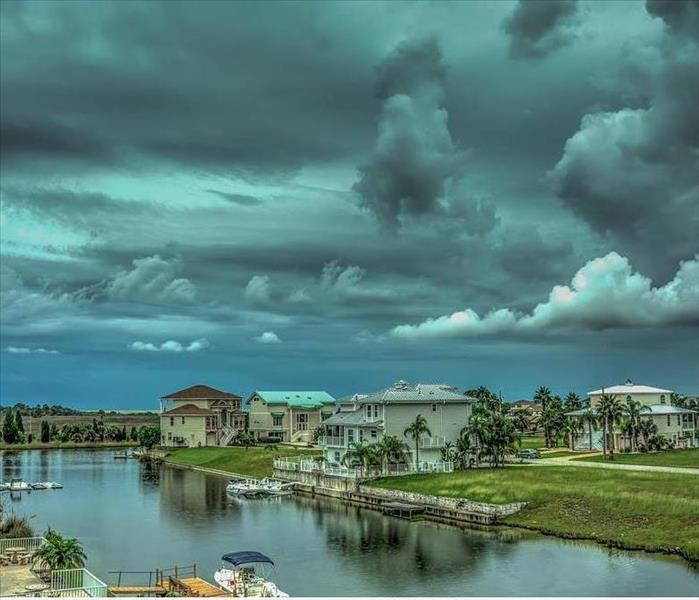 It is important to take every precaution necessary to ensure the utmost safety during a tropical storm, hurricane, or even heavy downfall.
It is important to take every precaution necessary to ensure the utmost safety during a tropical storm, hurricane, or even heavy downfall.
Summer months in the “Sunshine State” are filled with on and off rain almost every single day. Those who have lived here for years can relate to the unpredictable, wet, and frustrating weather that strikes Florida. From tracking hurricanes to simply preparing your home for a bad rainstorm, being proactive and diligent is the key to protecting you, your loved ones, and your residential property. Planning ahead is often the difference between total destruction and minor damage, so be sure to prepare yourself during this stormy summer season!
June 1st marked the first day of hurricane season in Florida, so it’s time to educate yourself on the best safety practices before it’s too late. Things like torrential rain downpours, high winds, and storm surges can wreak havoc on your homes. Keep the following storm safety tips in mind this summer:
- Trim your trees properly and be aware of any power lines near your home
- Unplug any unnecessary electrical equipment
- Create a contact list of important numbers such as emergency services, county law enforcement, local hospitals and utilities, and the local American Red Cross
- Be aware of the location of the closet storm shelter
- Make an emergency kit with enough food for 3-7 days, plenty of water, clothing, batteries, first aid kit, flashlights, emergency radio, cash, and a cell phone
- Keep your gas tank filled during the summer
- Right before a storm, turn the refrigerator and freezer temperature to as cold as possible
- Put up your hurricane shutters and remove any loose items from around the house
- Think about purchasing a generator
- Discuss an evacuation plan with your family
The above storm safety tips for Florida residents really only scratches the surface of what needs to be done to adequately prepare for a storm. It is important to take every precaution necessary to ensure the utmost safety during a tropical storm, hurricane, or even heavy downfall. Be sure to check back on our blog to learn more safety tips as we move along into the summer months. Be safe out there!
Hurricane Matthew Recovery Plan
10/11/2016 (Permalink)
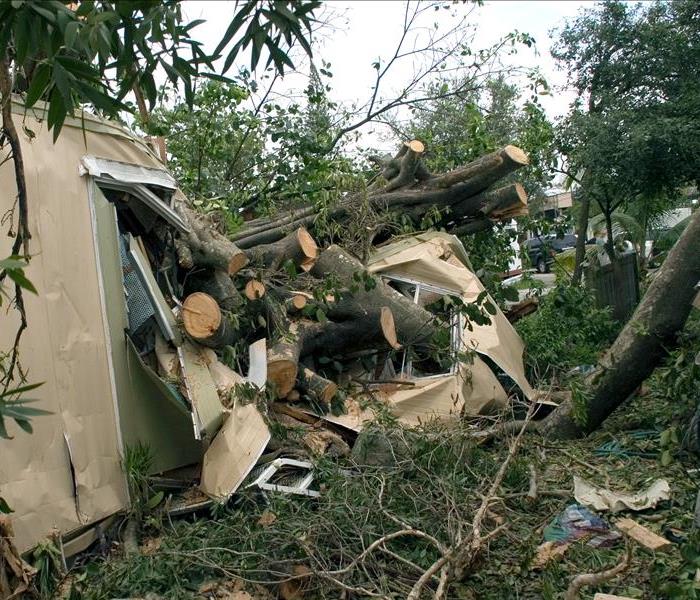 Contact SERVPRO of North Palm Beach County for 24-hour emergency service for storm damage cleanup and restoration.
Contact SERVPRO of North Palm Beach County for 24-hour emergency service for storm damage cleanup and restoration.
Florida felt the wrath of Hurricane Matthew last week and many Florida residents are now left to handle the aftermath of this deadly storm. The Atlantic coast had to deal with strong winds, persistent heavy rains that brought ocean waves across beaches, and rising water throughout the coastal communities. Flash-floods have been of major concern, leaving homeowners desperate to protect their families and their homes from damage.
Estimates point to over 1 million people left without power due to Hurricane Matthew and while the storm did not directly hit the Sunshine State, the winds, rain, and storm surges left countless homes damaged. As homeowners and property managers attempt to get back to “normal”, having a recovery plan is crucial.
If your home or commercial property has experienced flood damage, it is important to do the following:
- Remove lamps and other electrical items
- Use a mop to remove any excess water
- Take any wet cushions or upholstery and remove them
- Wipe down wood furniture carefully
- Place wood blocks or aluminum foil under the legs of furniture sitting on wet carpeting
- Turn the air conditioner on maximum to increase air circulation as much as possible
- Move colored rugs away from wet carpeting
- Remove any artwork or nice objects to a dry area
- Contact SERVPRO of North Palm Beach County for 24-hour emergency service
Our professionals are the best people to assess the damage and then restore your property. With South Florida’s most trustworthy, professional storm damage specialists, we are prepared to get your home or commercial property back to its pre-storm condition. Contact us today to learn more about our unmatched storm and flood restoration service.
Preparing for Hurricane Season
8/31/2016 (Permalink)
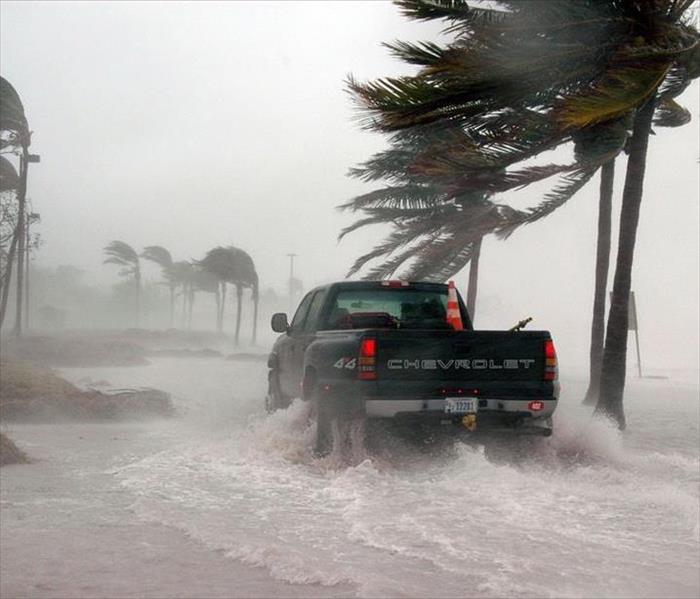 Experts have predicted that the quiet 10 years of hurricane seasons may come to an end this year. As such, being prepared is essential to your safety.
Experts have predicted that the quiet 10 years of hurricane seasons may come to an end this year. As such, being prepared is essential to your safety.
The 2016 hurricane season officially began on June 1st and while Floridians are celebrating a record low decade of category 3 or higher hurricane landfalls, being prepared is imperative to keeping you, your family, and your home safe. The Atlantic hurricane season runs through November 30th, meaning there are still three months of potential hurricanes looming around Florida. Experts have predicted that the quiet 10 years of hurricane seasons may come to an end this year. As such, being prepared is essential to your safety.
South Florida residents are encouraged to remain alert and in tune with the weather during these months. While a hurricane may not strike, tropical depressions and tropical storms may still pose a threat to your home.
Making Sure Your Home is Ready
Hurricanes mean high winds, a lot of rain, and potential property damage. Making sure that your home is ready for these conditions can prevent some dangerous and costly damage. Be sure to do the following:
- Ensure that your rain gutters are clear, as clogging may cause water damage.
- Trim and/or remove any tress or limbs that are damaged surrounding your home.
- Consider buying a generator for an alternative power source in the event that the power goes out.
- Retrofit windows, doors, and roof to reduce the likelihood of property damage.
In addition to the above suggestions, it is important to prepare a disaster supply kit to with things like batteries, flashlights, copies of important personal information, first aid supplies, and cash. You and your family should discuss a family emergency plan is the event of a bad storm, a local evacuation, and any potential weather threat.
Storm Recovery in Florida
Being prepared is crucial to you and your family no matter how large or small a storm may be. Even a category 1 or category 2 hurricane can cause damage to your property. Recovering from a disaster is a slow, gradual process and knowing who to call for repairs and restoration is the first step. SERVPRO of North Palm Beach County has dealt with countless water damage jobs following disastrous hurricane seasons. Our water damage repair team is professional, kind, and efficient. Be sure to call 561-881-8784 immediately after water damage or storm damage is discovered in your home or commercial property.
When Storms or Floods hit North Palm Beach County, SERVPRO is ready!
7/20/2016 (Permalink)
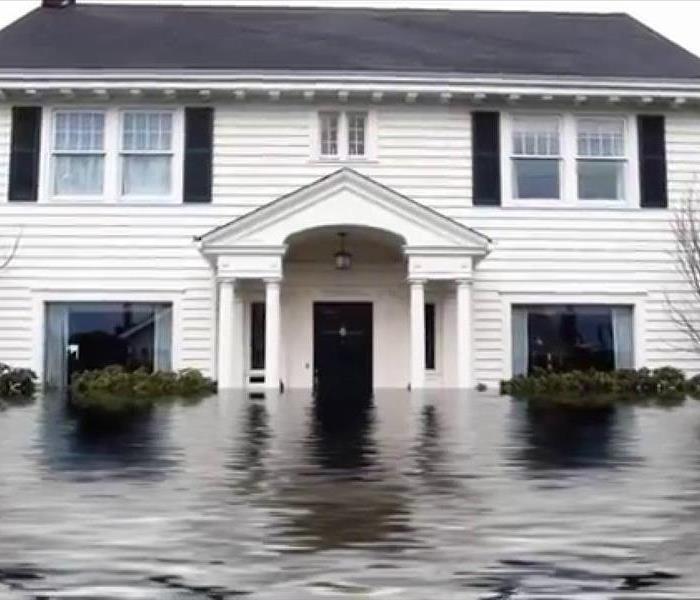 Our highly trained crews are ready to respond 24/7 to storm or flood damage in North Palm Beach County.
Our highly trained crews are ready to respond 24/7 to storm or flood damage in North Palm Beach County.
SERVPRO of North Palm Beach County specializes in storm and flood damage restoration. Our crews are highly trained and we use specialized equipment to restore your property to its pre-storm condition.
Faster Response
Since we are locally owned and operated, we are able to respond quicker with the right resources, which is extremely important. A fast response lessens the damage, limits further damage, and reduces the restoration cost.
Resources to Handle Floods and Storms
When storms hit North Palm Beach County, we can scale our resources to handle a large storm or flooding disaster. We can access equipment and personnel from a network of 1,650 Franchises across the country and elite Disaster Recovery Teams that are strategically located throughout the United States.
Have Storm or Flood Damage? Call Us Today 561-881-8784
SERVPRO is the Proud National Sponsor of the American Red Cross Ready Rating™ Program
4/21/2016 (Permalink)
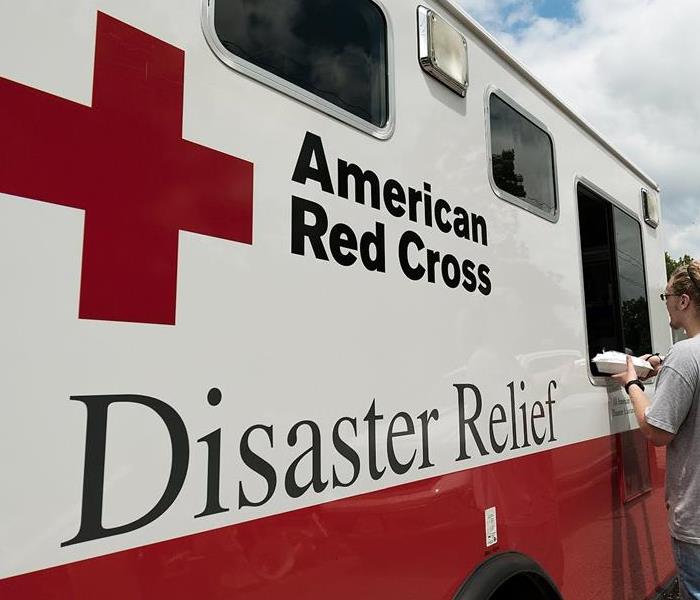 SERVPRO is the proud National Sponsor of The American Red Cross Ready Rating™ Program
SERVPRO is the proud National Sponsor of The American Red Cross Ready Rating™ Program
Preparation is the key to minimizing the damage during an emergency. When disaster strikes, it is often difficult to make a logical, smart decision with a limited amount of time and a lot of stress and pressure. However, with a careful preparation plan in place, emergency situations can be managed and resolved quickly and efficiently. SERVPRO has become a master of dealing with and fixing disasters. Leading the nation in both residential and commercial restoration, SERVPRO is able to cleanup structural damage caused by water, fire, mold, soot, and more. When an emergency occurs, SERVPRO is always there to clean up the mess to limit the devastation that a disaster can have on people and their community.
With a comprehensive understanding of disaster relief, SERPVRO has officially teamed up with The American Red Cross as a national sponsor of the Ready Rating program. In doing so, SERPVRO will play a major role in making sure that homeowners and business owners are prepared and ready to handle disaster. Using the 1-2-3 Assessment, the Ready Rating Program helps organizations to better understand their current level of preparedness through a measurement and scoring system. Once a Ready Rating Score is given, the organization is now able to utilize the program’s tips and best practices to help improve their score over time.
Dominick Tolli, the Vice President of Preparedness and Health & Safety Services at the American Red Cross stated, “We are excited to have SERVPRO as a national sponsor of the Ready Rating Program. SERVPRO understands the importance of being prepared for emergencies before they happen. As a national sponsor of the Ready Rating Program, SERVPRO is helping businesses, schools and organizations become more resilient to disasters and other emergencies.”
Preparing for a disaster before it happens is absolutely critical to minimizing damage and cost associated with the emergency. SERVPRO has spent decades helping to speed up the recovery process following a disaster or emergency for homes and businesses across the country. We are dedicated to providing fast, effective, and reliable fire and water cleanup and restoration, 24 hours a day, 7 days a week. Contact us today to learn more.

 24/7 Emergency Service
24/7 Emergency Service







































